El Real de la Jara 2019/3/26
Leaving Real de la Jara early in the morning. Passing Castillo de las Torres close to the border between Andalusia and Extremadura a little later.
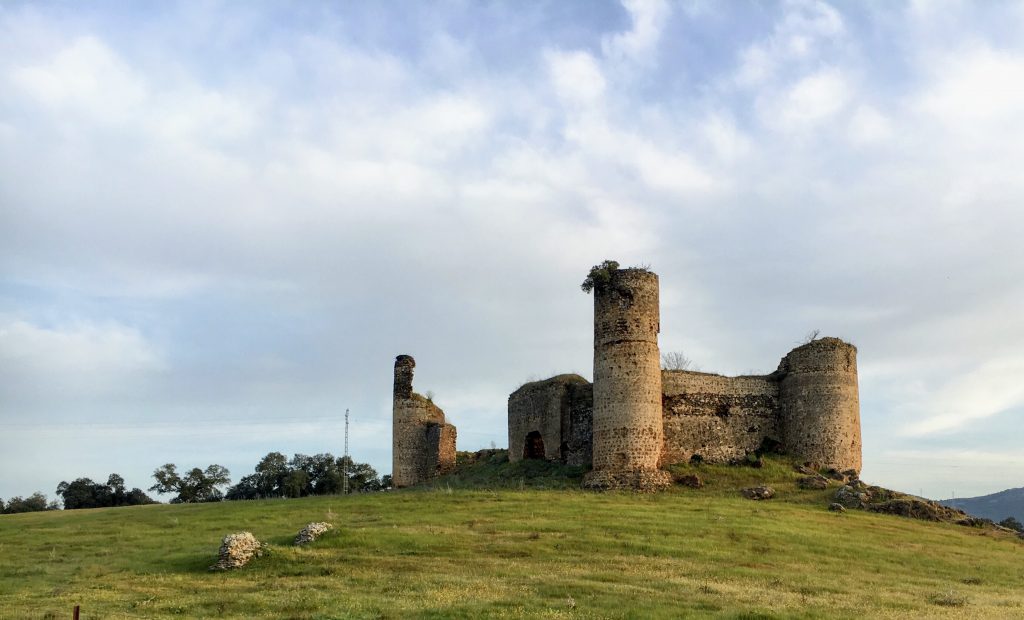
The walk goes along huge grasslands.
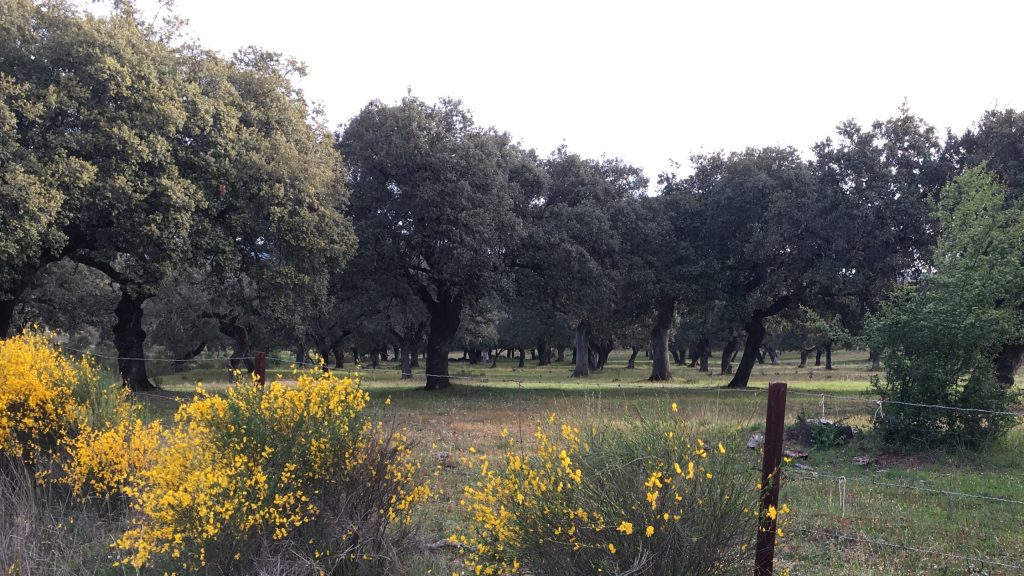
Some 6 km before reaching Monesterio we get in touch with the N-630 and the A-66. It’s ok.
Monesterio
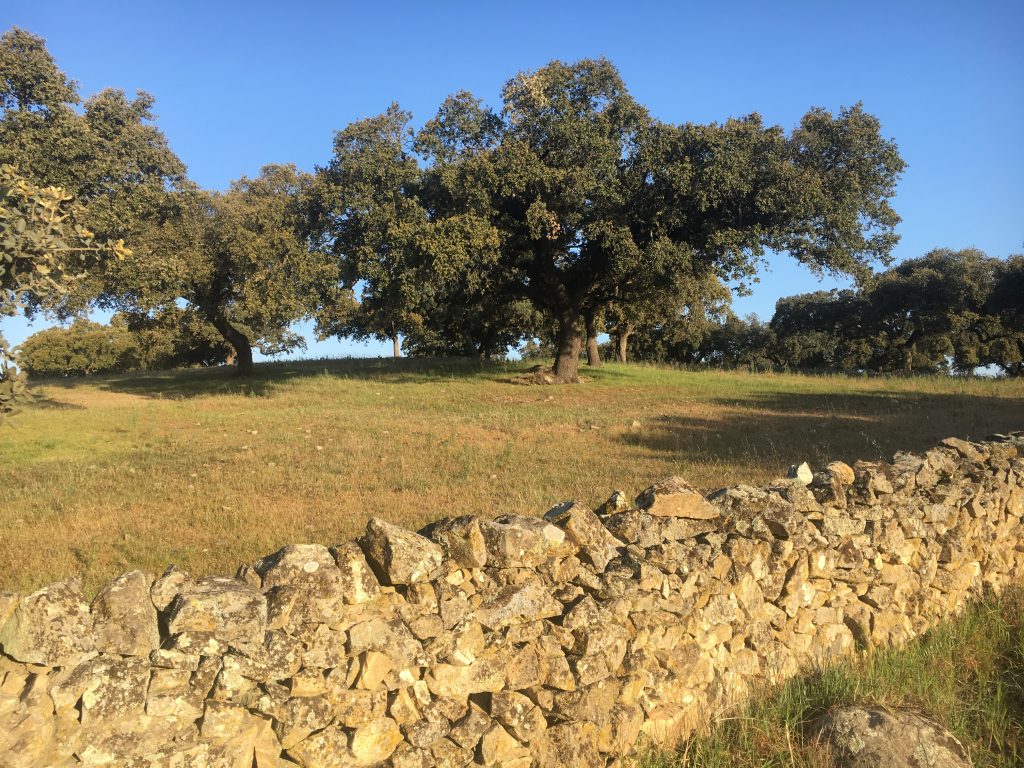
Roman walls around the meadow. Here in Extremadura there is another type of road sign.
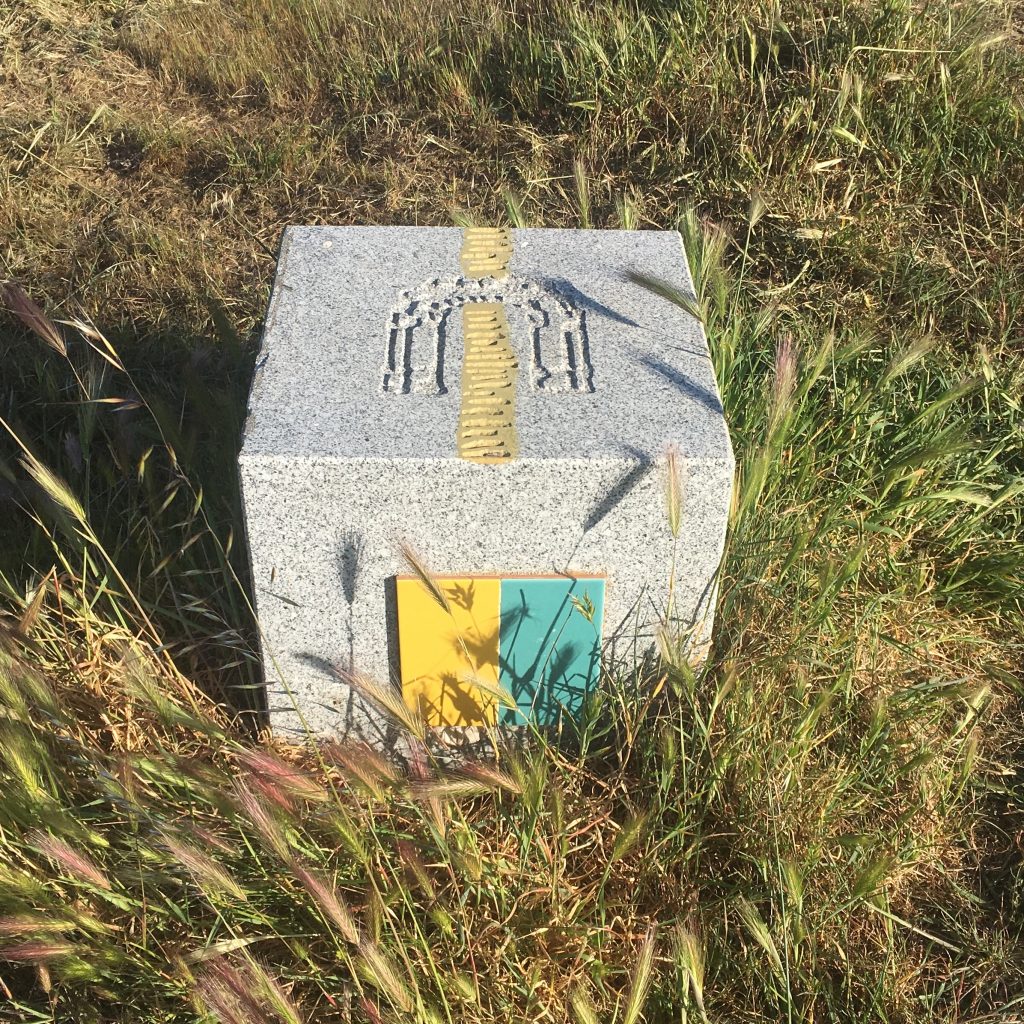
On top of the stone is engraved a roman arch, indicating that I’m now walking on a roman road.
In Fuente de Cantos, some 20 km after Monesterio, a short stop for a café con leche and a visit to the Zurbarán house.
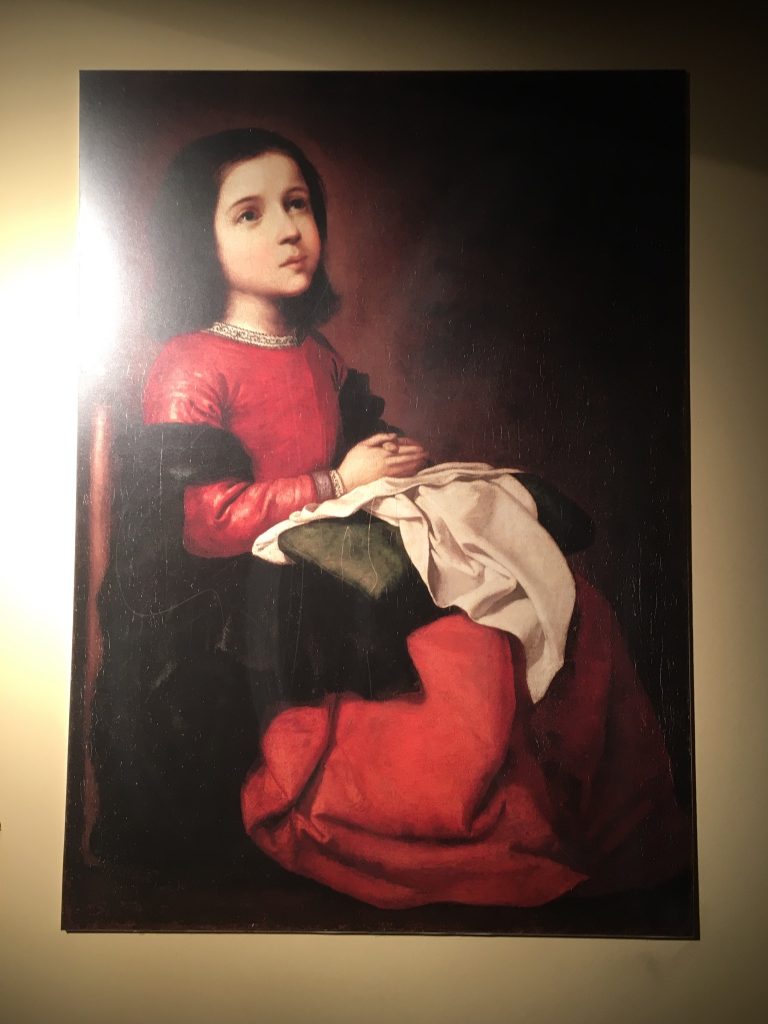
One hour more I reach Calzadilla de los Barros, where I get a room in hostal Rodríguez. It’s a worn hostel, but the owners are very friendly, the food is good and laundry is free.
Calzadilla de los Barros
Out of the village I have 15 km with grass, wheat and wine fields. Then another little village, Puebla de Sancho Peréz, and the first chance for a café con leche.
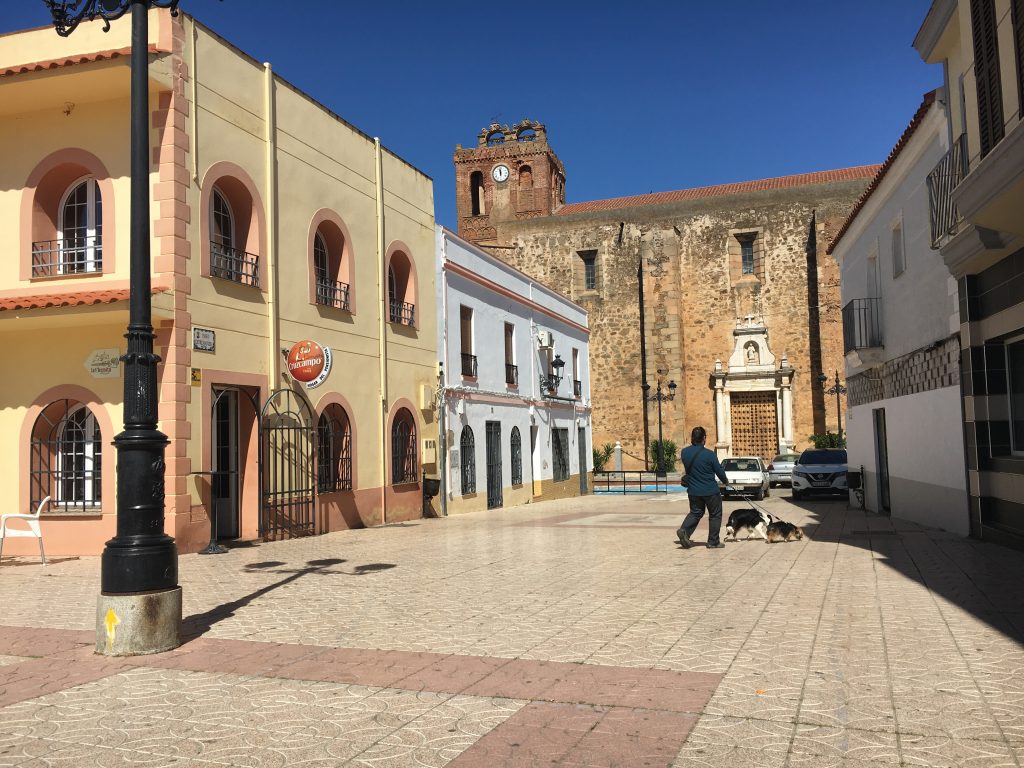
The second chance comes 5 km later. In Zafra, a real city with almost 20000 inhabitants.
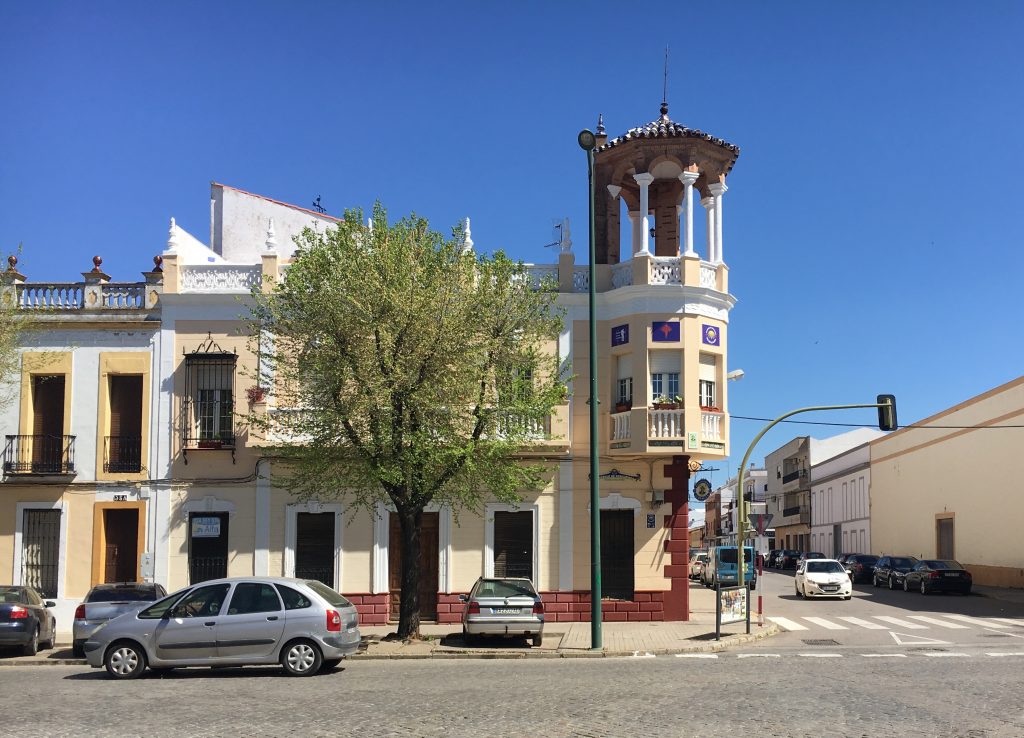
But the time is only 13, so I take 5 km more and arrives Los Santos de Maimona. Here I have to go to the local police station in order to get the keys to the albergue. The albergue is very nice. Two buildings at each end of a rectangular atrium yard.
Los Santos de Maimona
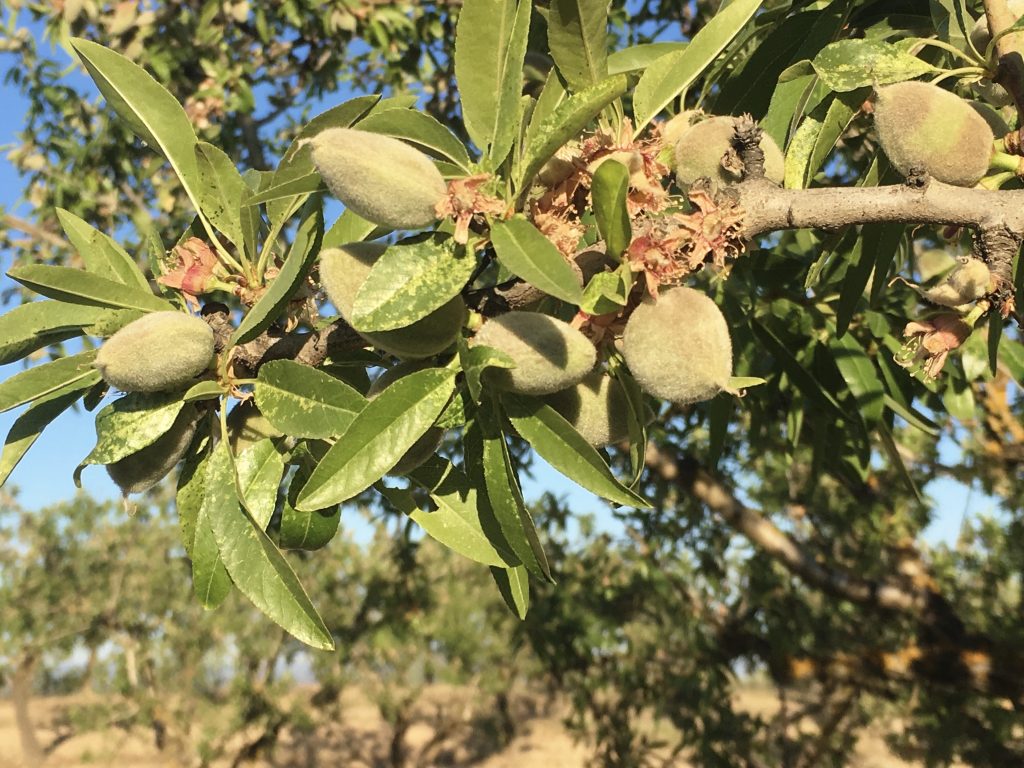
Another beautiful day for walking. Olive trees in all directions. Thousands of green pipes to protect new trees.
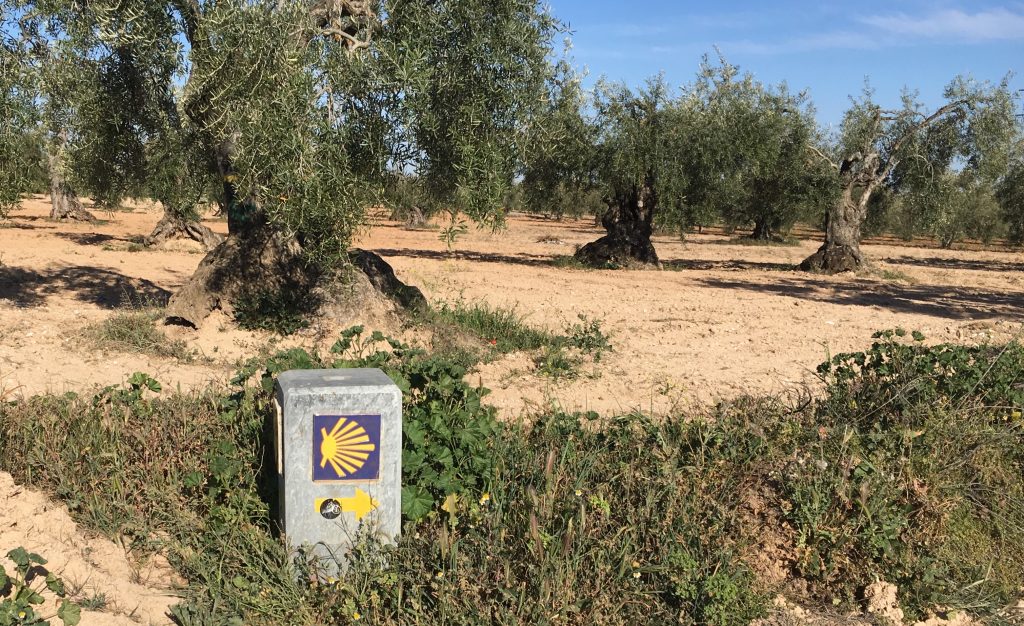
After some big road (N-630) and railway track crossing I am suddenly in Villafranca de los Barros.
Villafranca
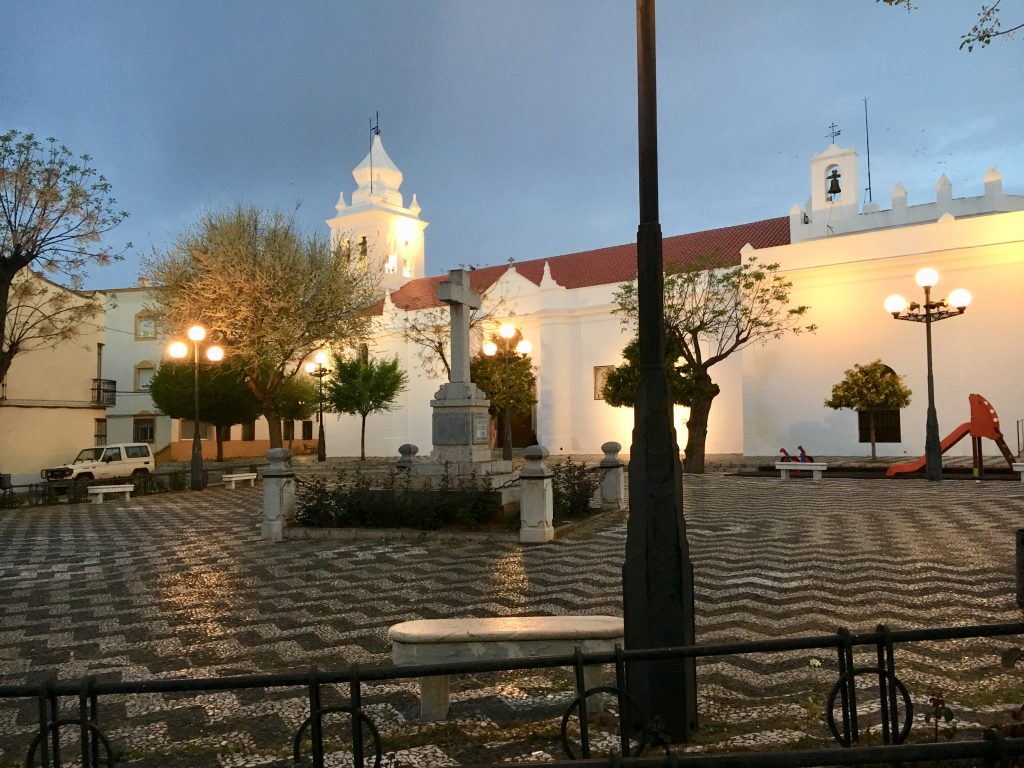
The stage is flat, with full exposure to the sun and very monotonous as you go along long and straight dirt tracks.
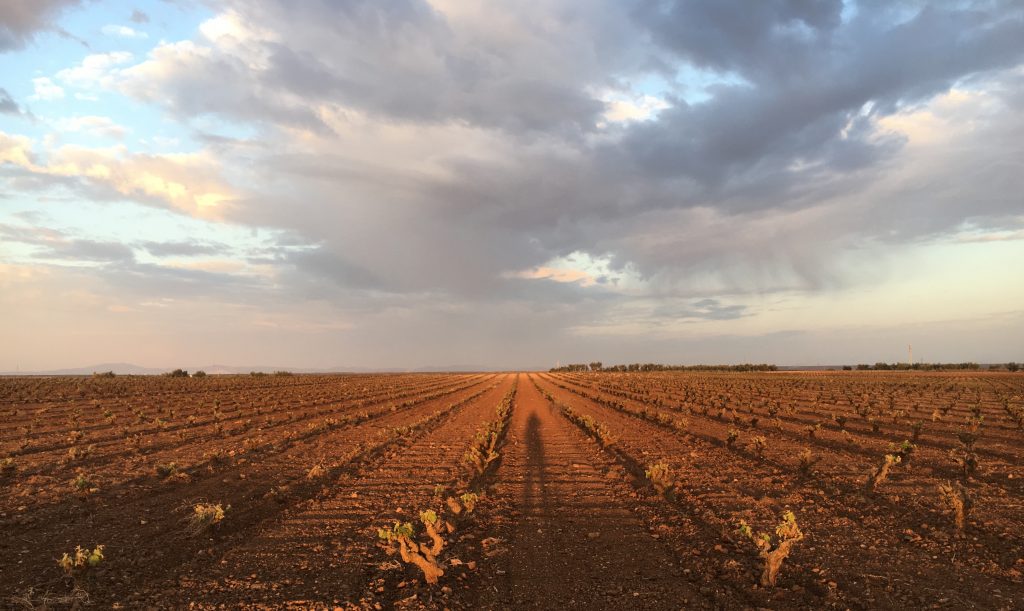
We see vineyards in all directions. That’s all. There is no intermediate services between Villafranca and Torremejia, unless we divert to Almendralejo extending the route by some 5 km.
I turn left and stay overnight in Almendralejo. The trip tomorrow will be just a little longer.
Almendralejo
The stage is long and flat, with full exposure to the sun and very monotonous, just as yesterday. Today I got a café con leche and a bocadillo in Torremejio.
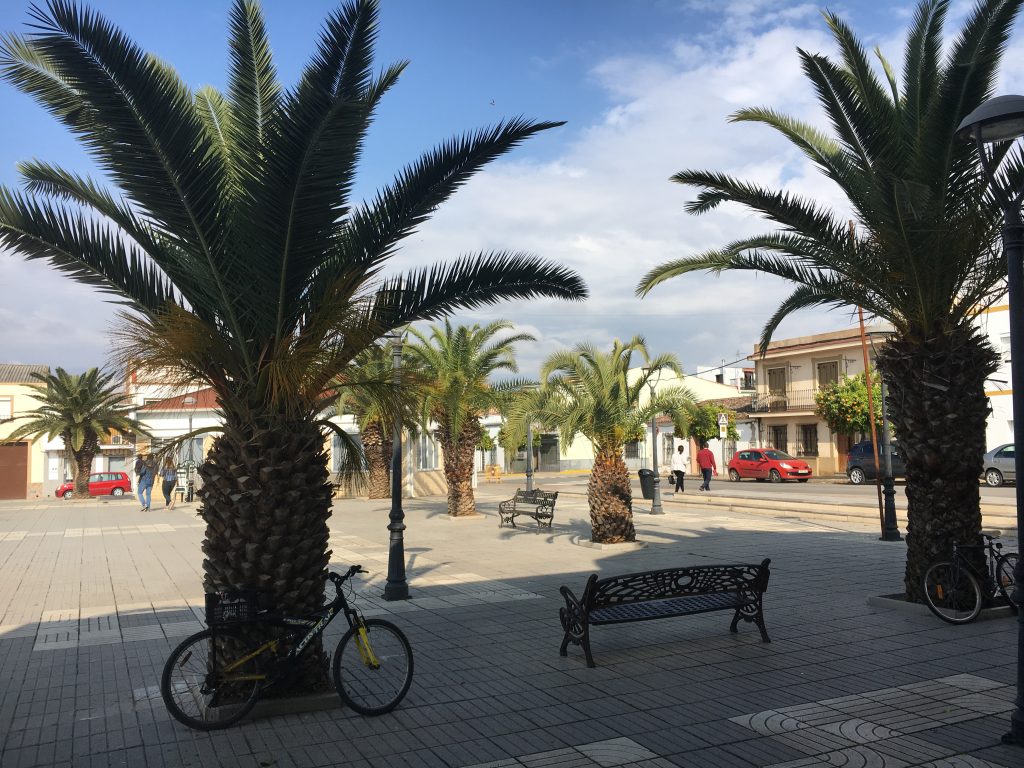
The first half is along the N-630 and, later on through the open field directly towards Mérida.
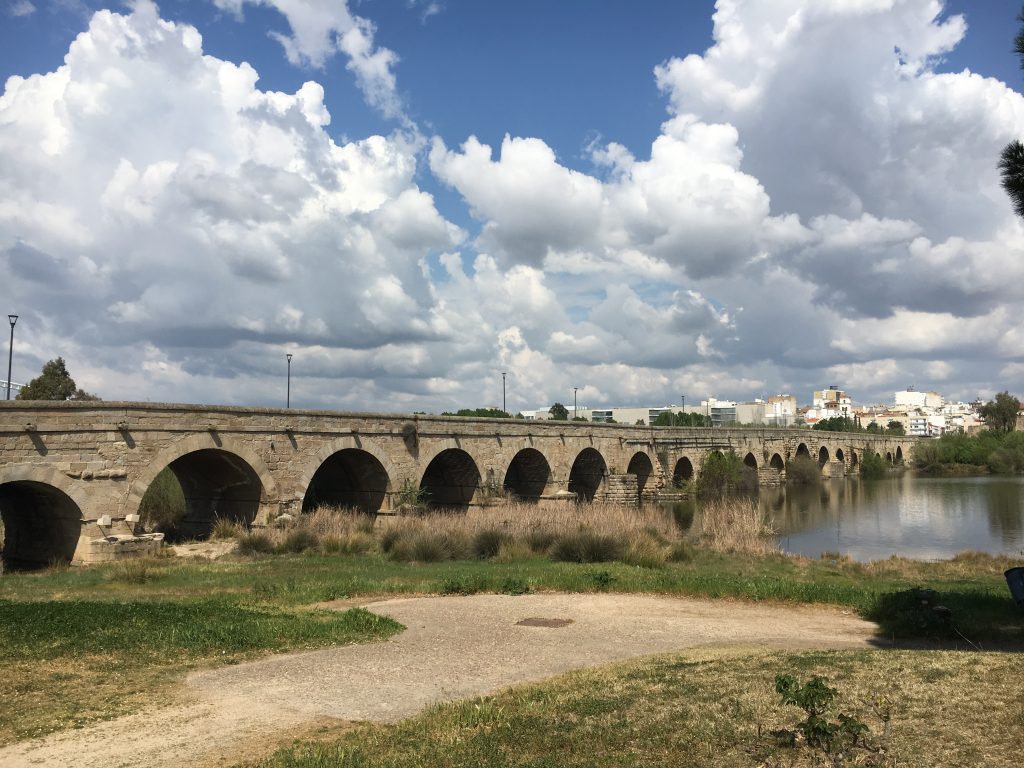
Mérida is the capital of Extremadura. When it was founded in 25 BC by Augustus, to resettle emeriti soldiers discharged from the Roman army, it was known as Augusta Emeriti.
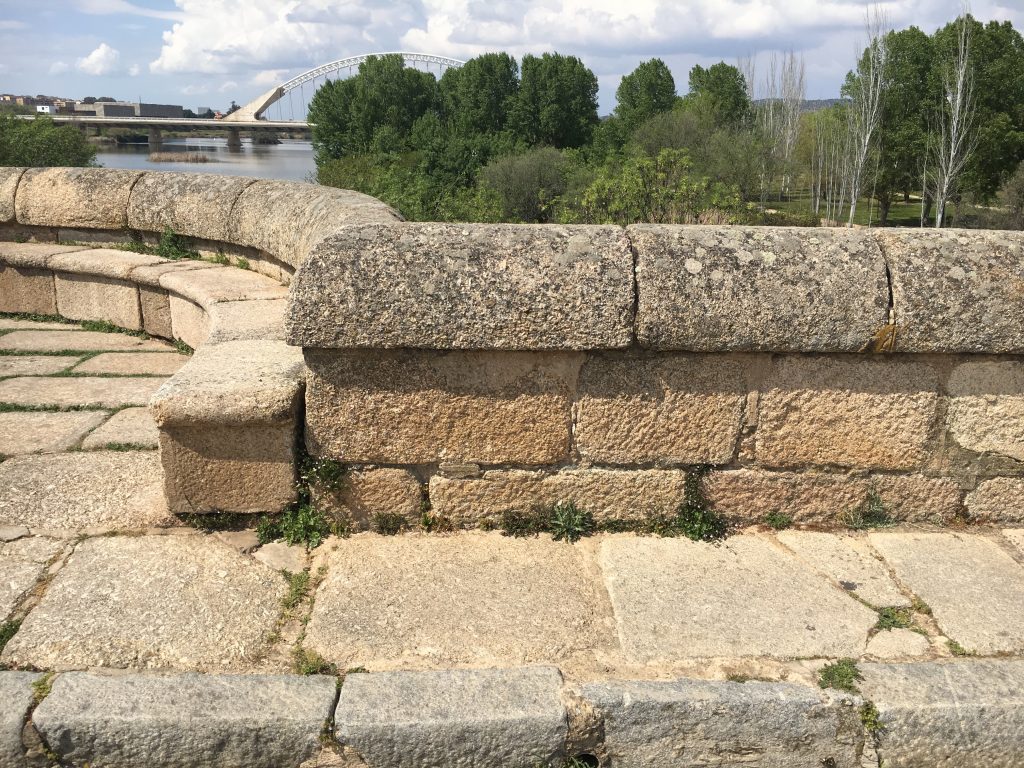
Mérida 2019/4/1
Today I pass through the Roman aqueduct of Los Milagros, at the exit of Mérida, and the Roman dam of Proserpina.
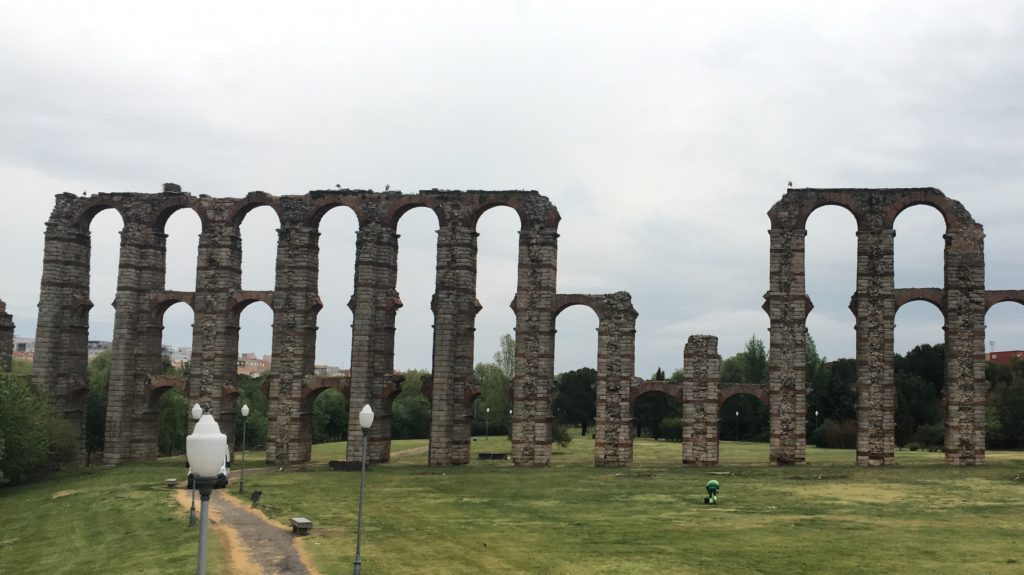
The day passes largely by dirt roads between forest and Mediterranean scrub:
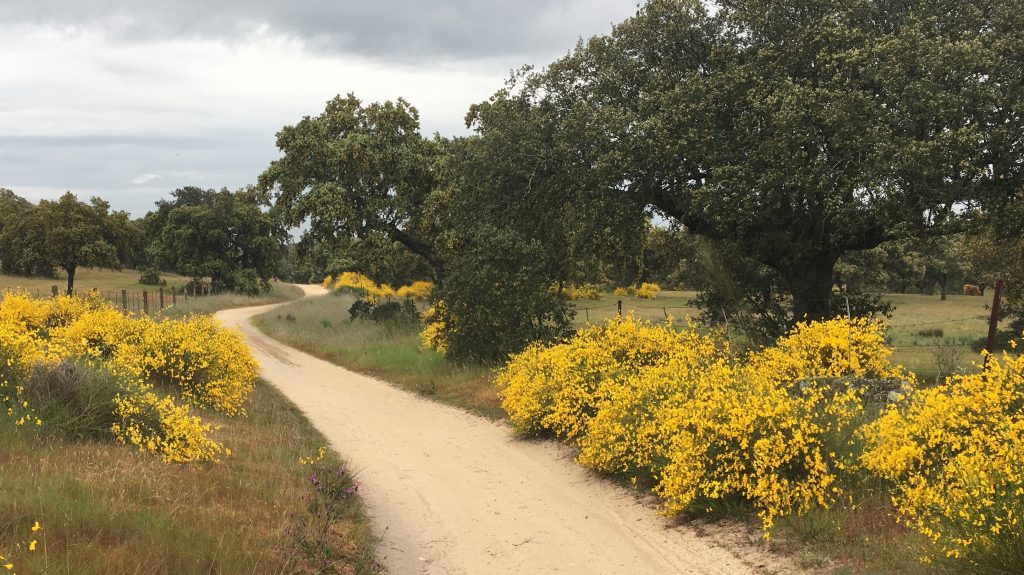
Then I’m in Aljucén. My albergue is very close to the (big) church. And now earth and sky are in one, with lightning and thunder.
Aljucén
Heavy fog is promised all morning. From Aljucén, I walk the beautiful and lonely almost 20 km to Alcuéscar, partly through the Natural Park of Cornalvo.
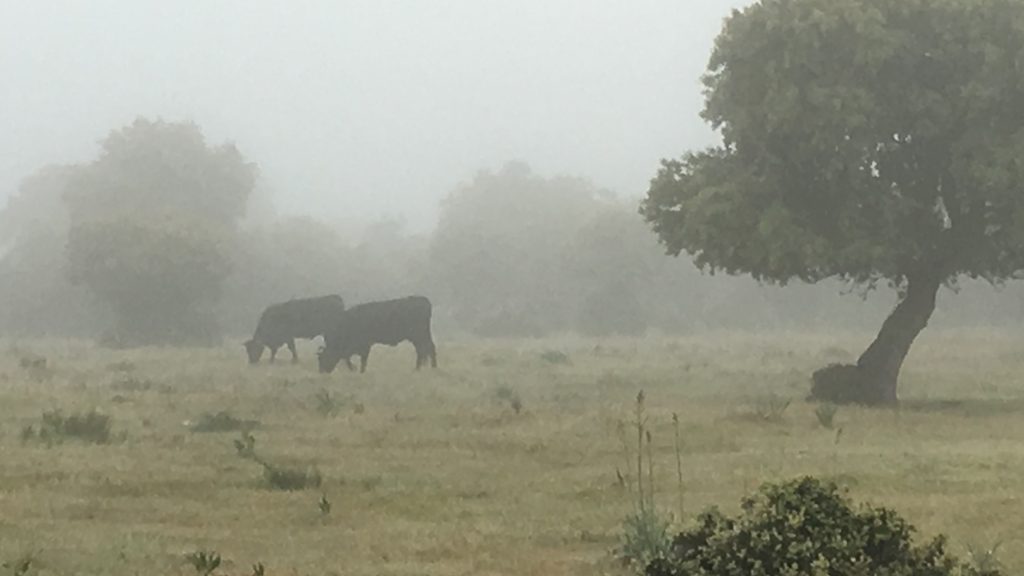
The road is ascending slowly from 200 m to 500 m. Near the top, around noon, the fog is finally disappeared.
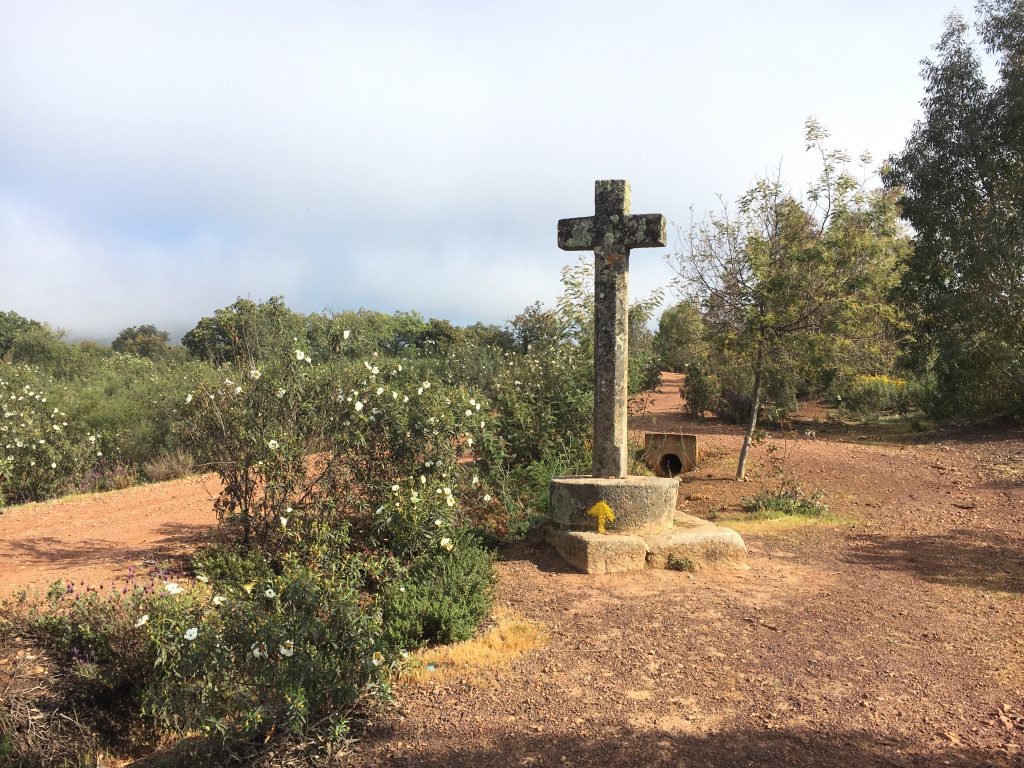
In Alcuéscar the only albergue is Convento de los Esclavos de María y los Pobres, an order of religious-welfare nature.

Alcuéscar

The albergue in early morning light. It’s actually rather cold, 5 degree, I think.
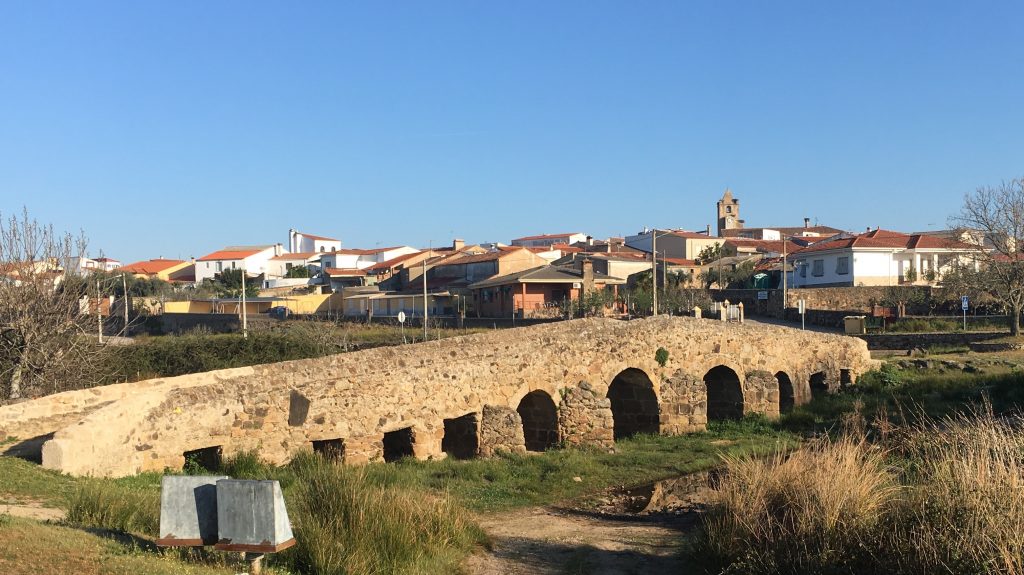
On the route there was more of those miliary stone. They are placed along Roman roads to indicate the distances each thousand passus (double steps). This Roman mile is approximately 1 480 meters.
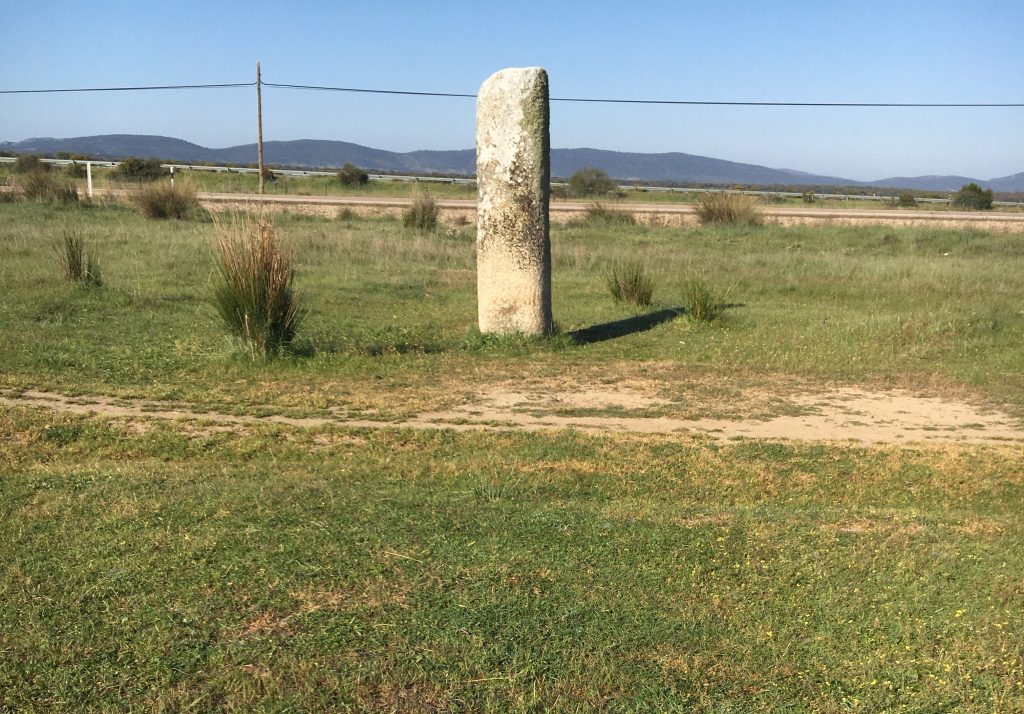
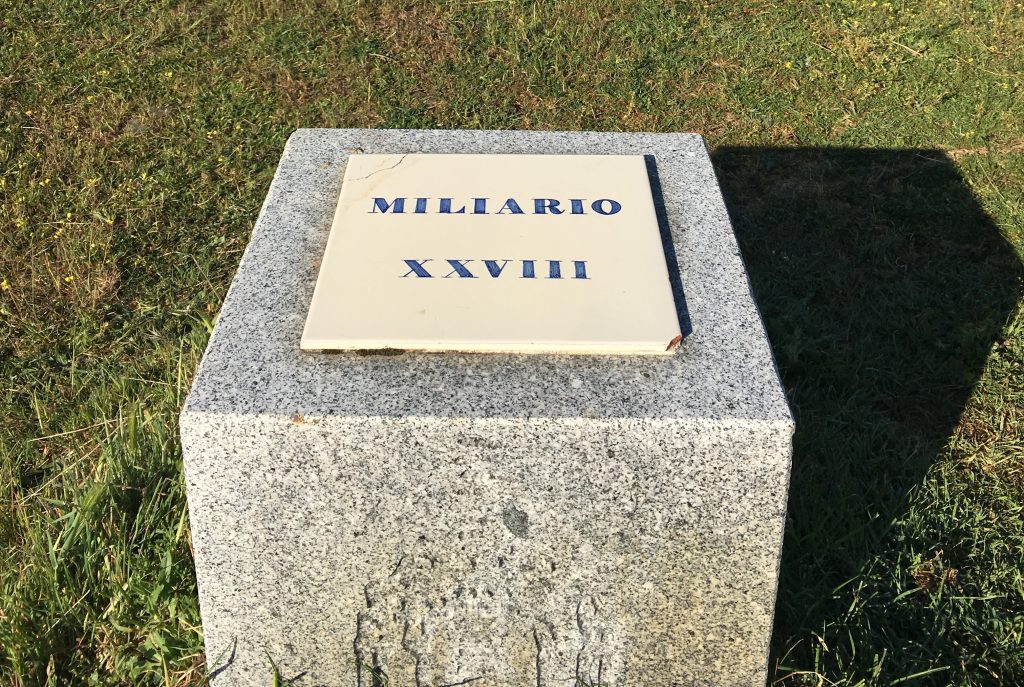
We have sun, blue sky and 17 degrees.
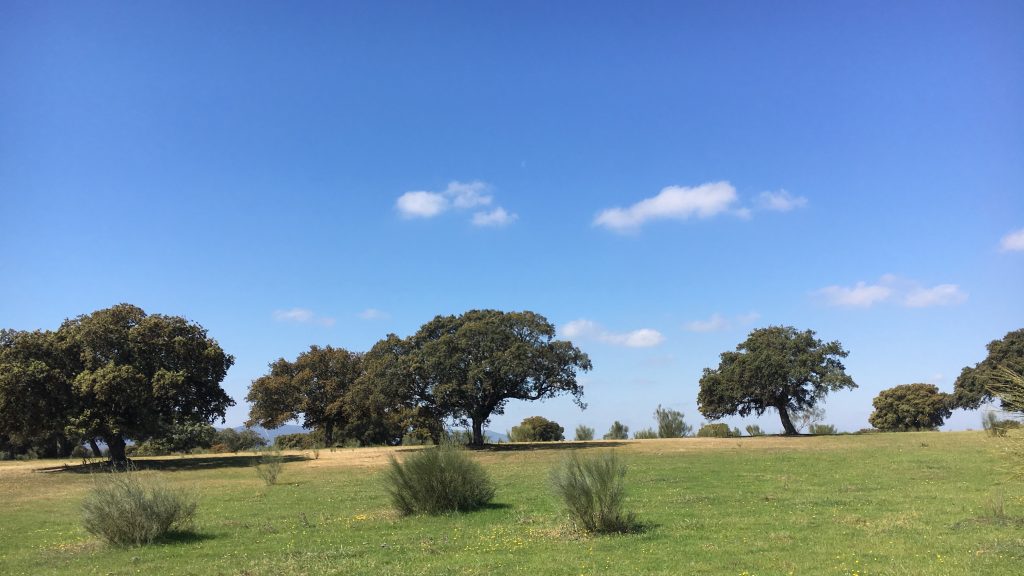
And a really cold wind.
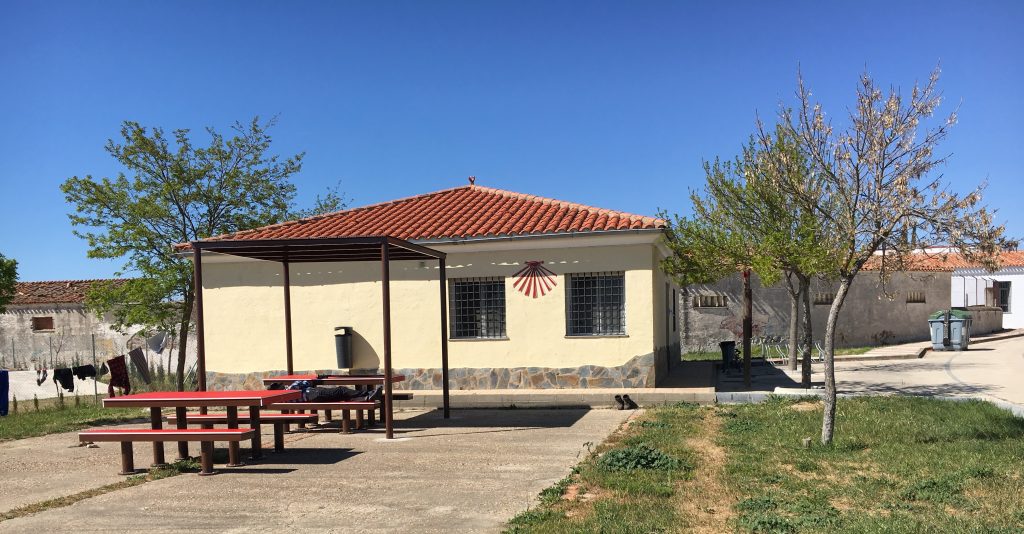
Valdesalor is a nice little village. There is two bars and a tiny mercado. At the albergue there is a notice that peregrinos must registrate at bar Julia. The first peregrino get the keys and opens the albergue, but all has to go to the bar and registrate and pay 8€.
Valdesalor
In the morning it’s cold as in cold. The weather-app says 3 degrees.
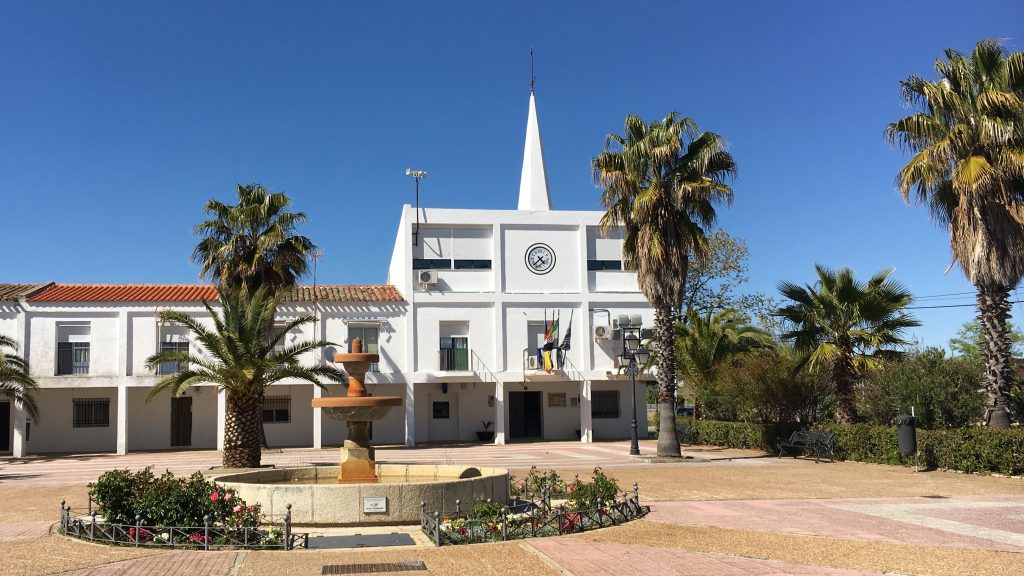
There is only two hours walk to Cáceres. The museo there was definitely the visit worth.
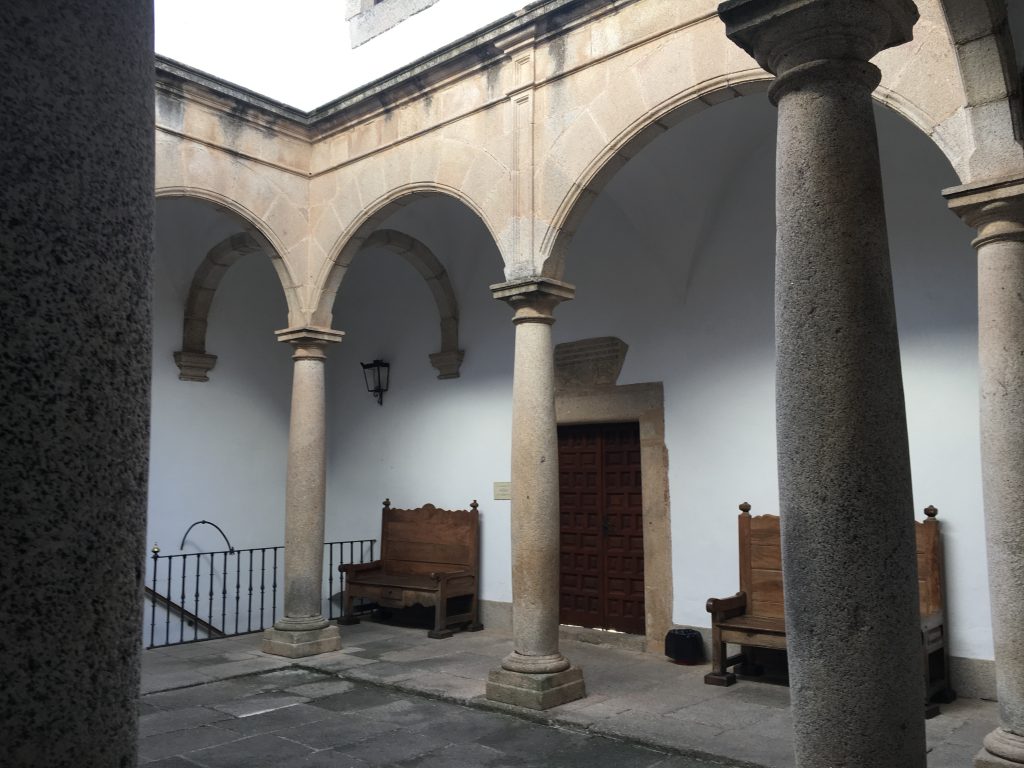
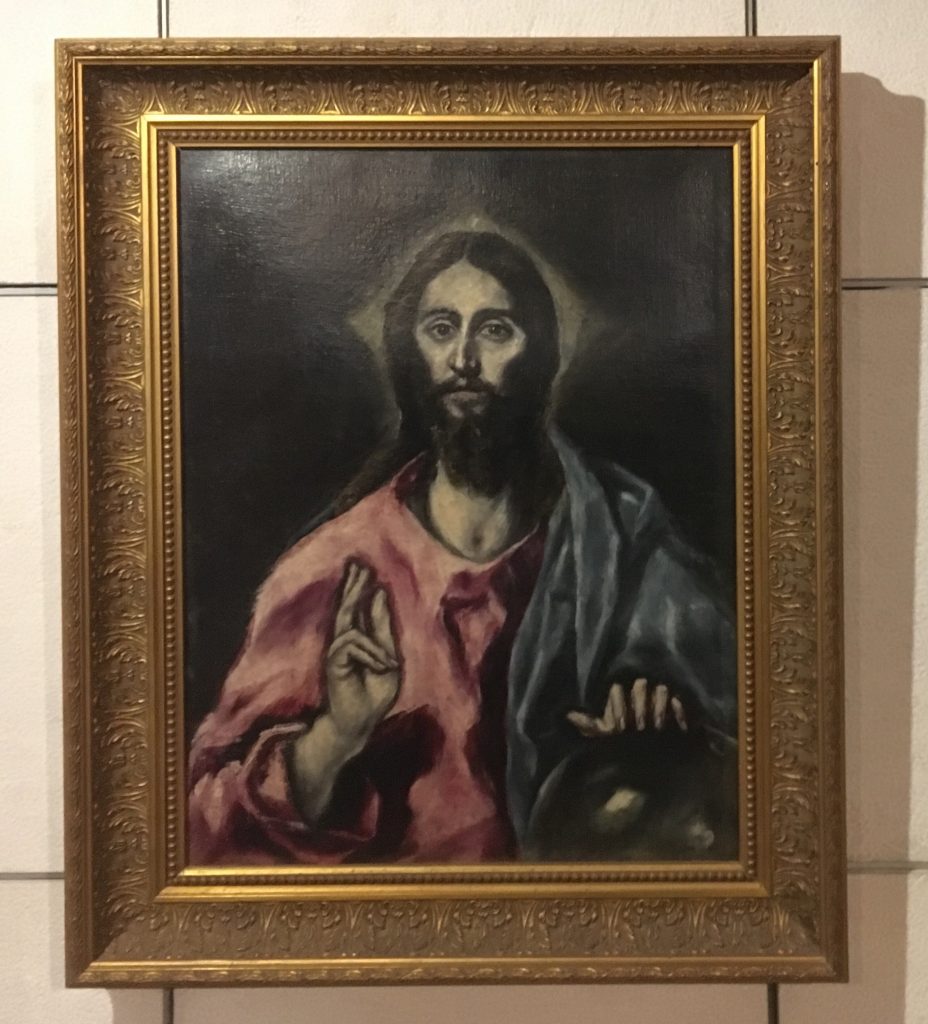
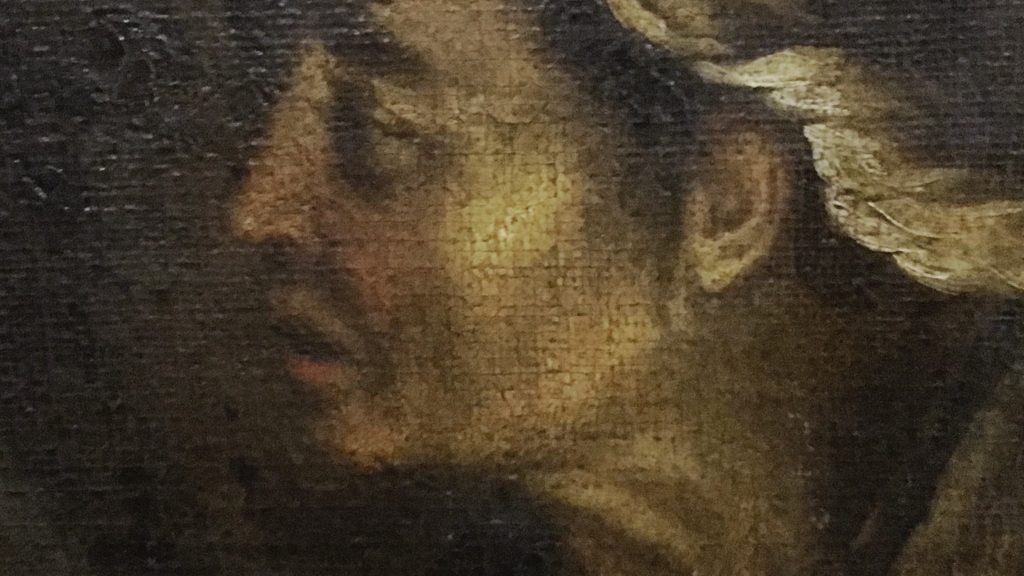
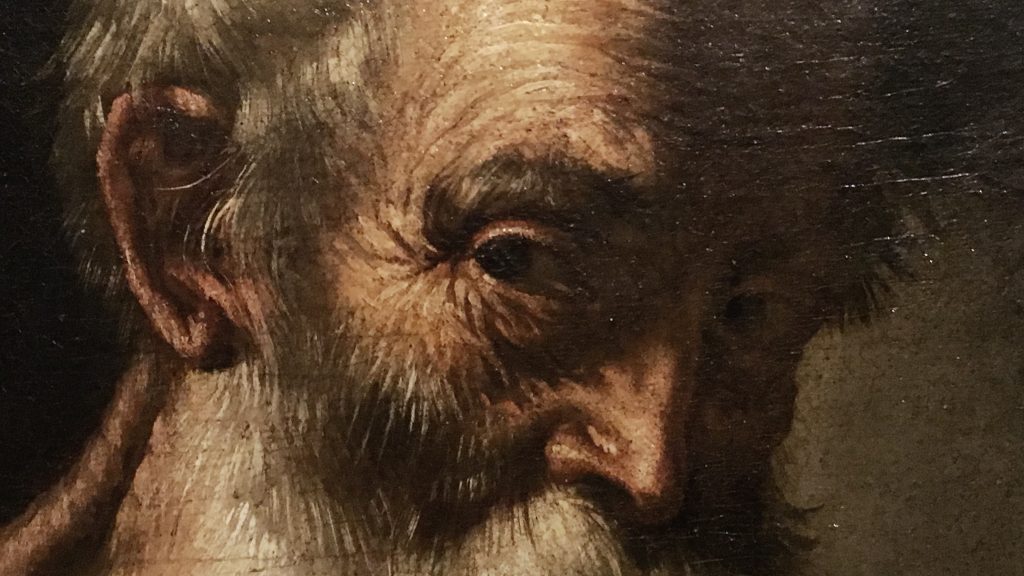
It was easy to get lost in the old city. The streets so narrow that the gps got totally perplexed.
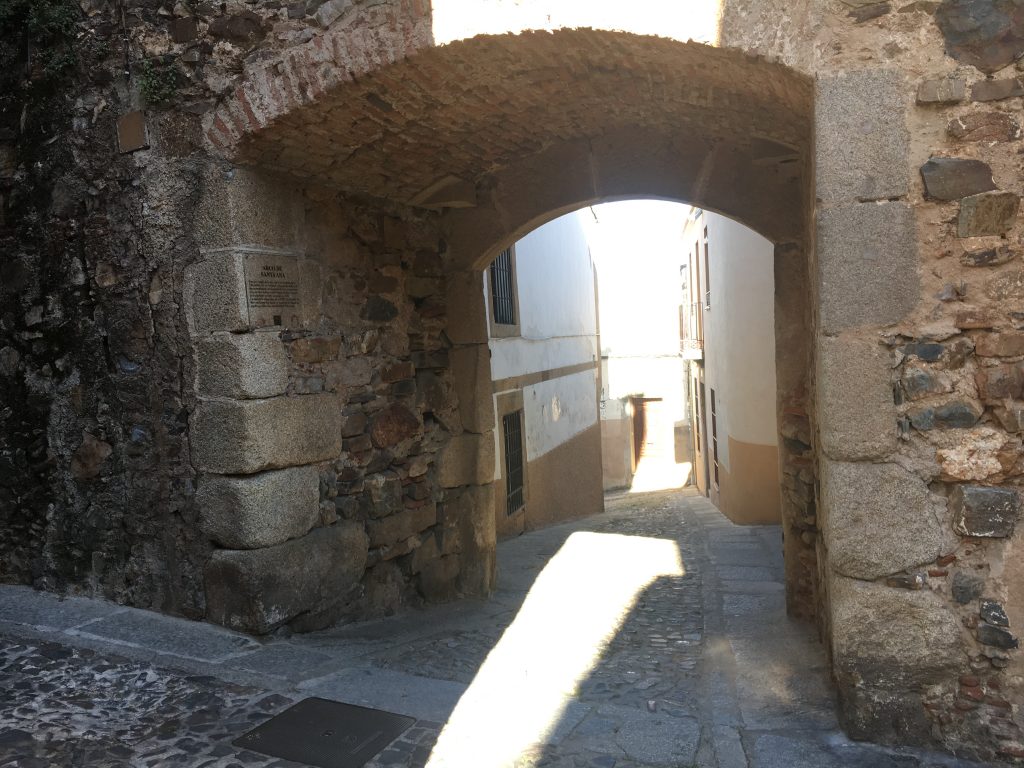
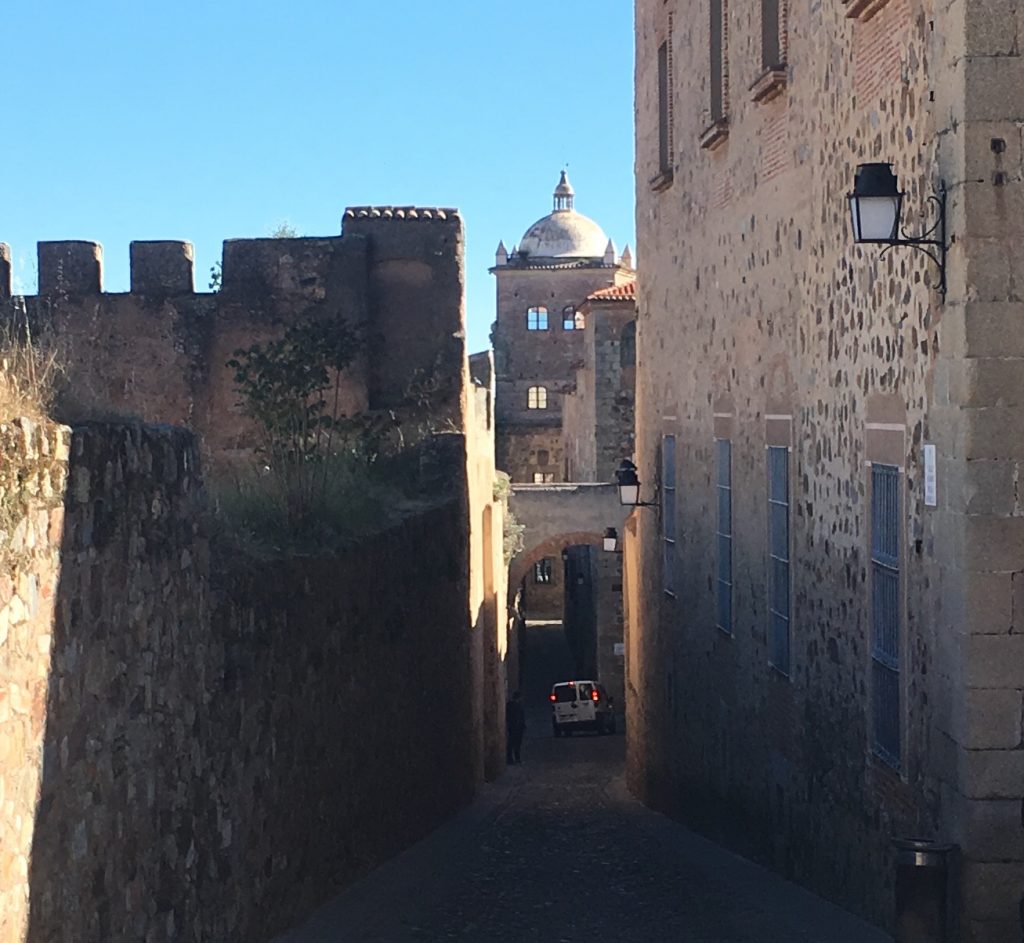
Plaza Mayor.
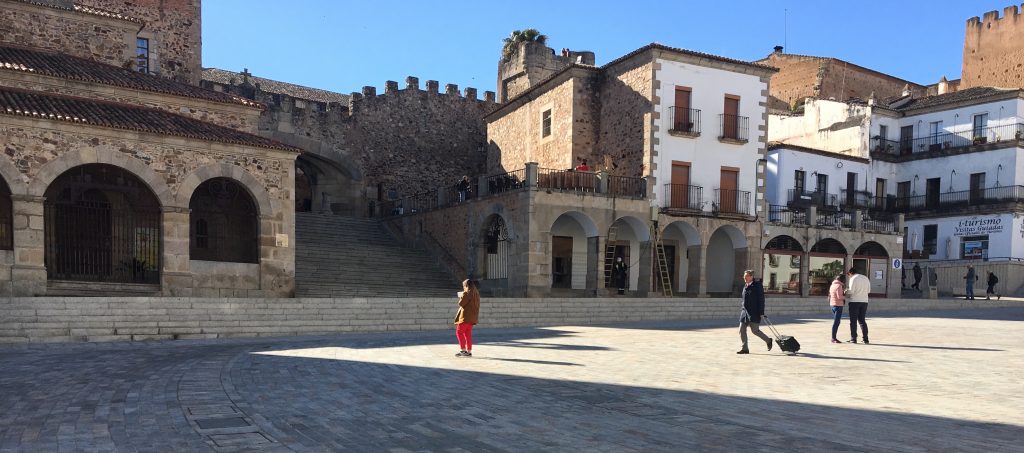
Then there is again a two hours walk, this time ending in Casar de Cáceres. Not the most spectacular walk. But Casar de Cáceres was ok.
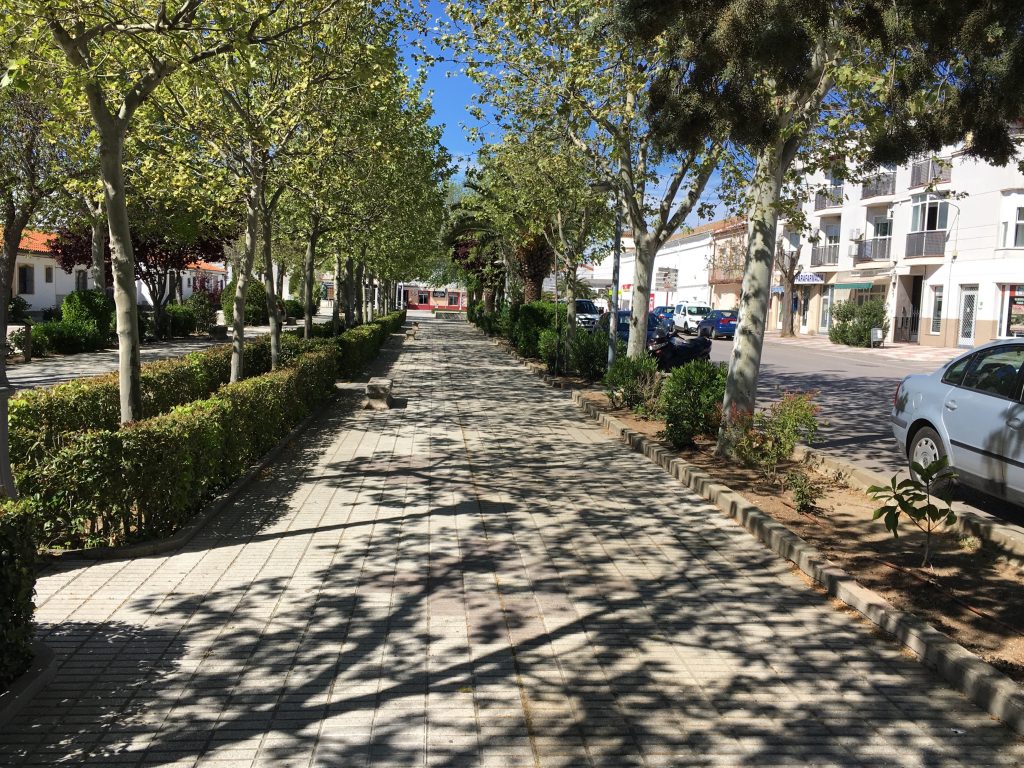
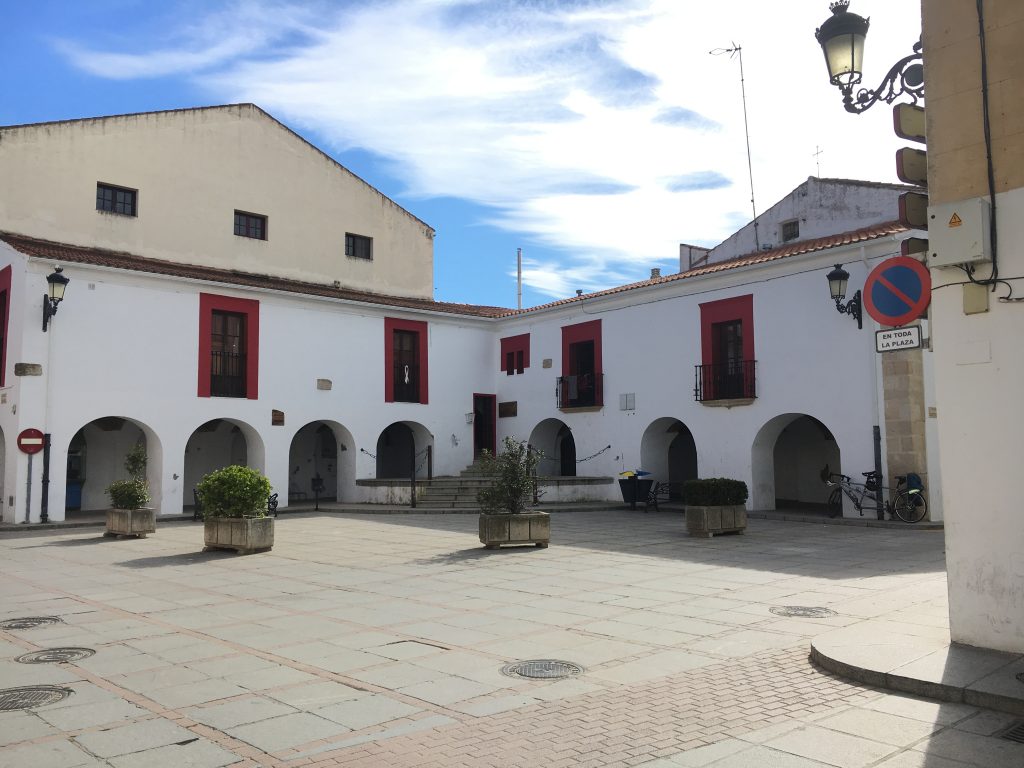
Casar de Cáceres
It had rained at night and the sky looked a little threatening.
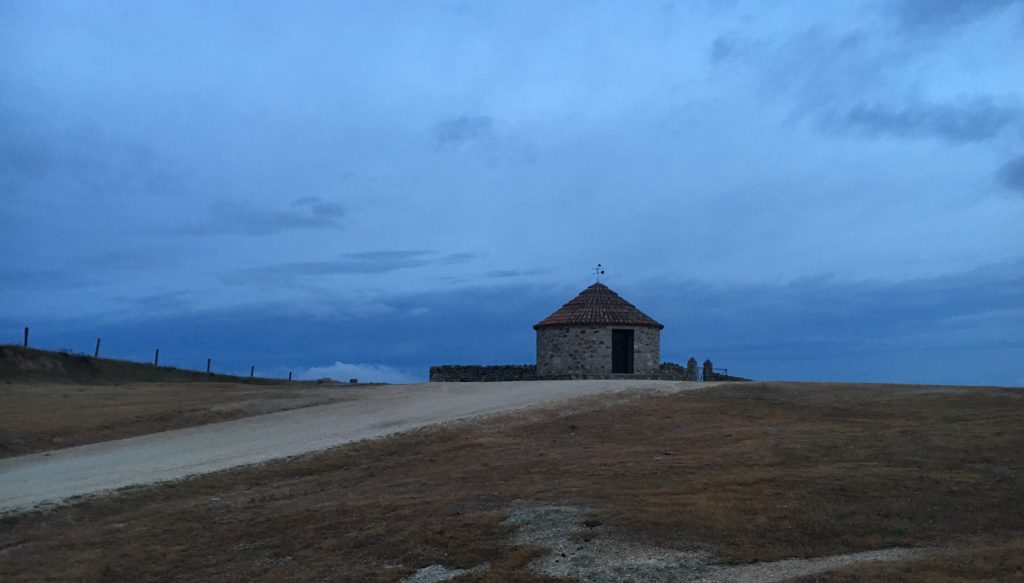
After an hour of walking, the rain began. The rain pants came on and the iphone hidden away.
Virtually no pictures today. Sad, because the landscape was beautiful and varied. Roman stone walls along the path and surrounding fields.
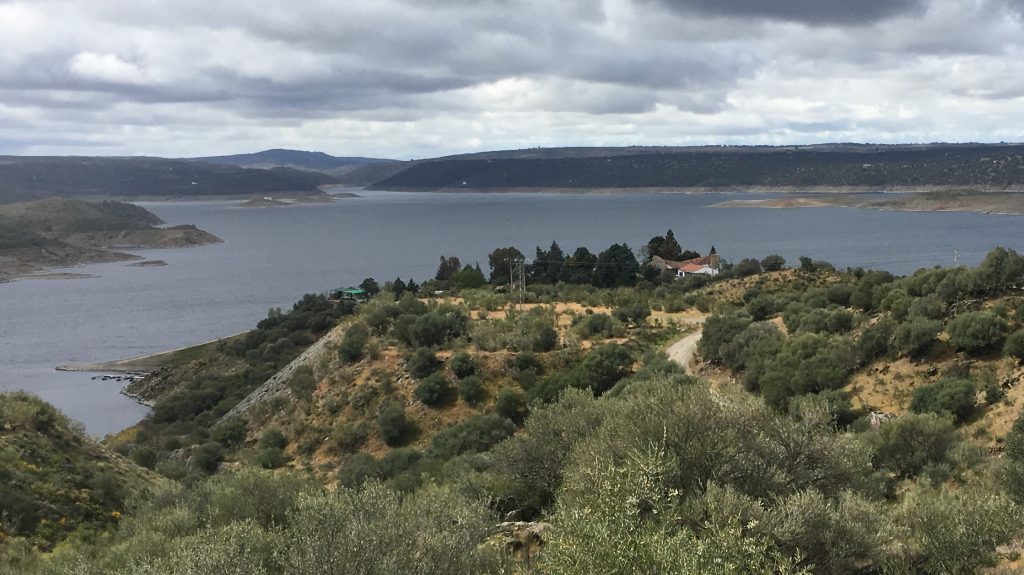
Embalse de Alcántaral, very beautiful.
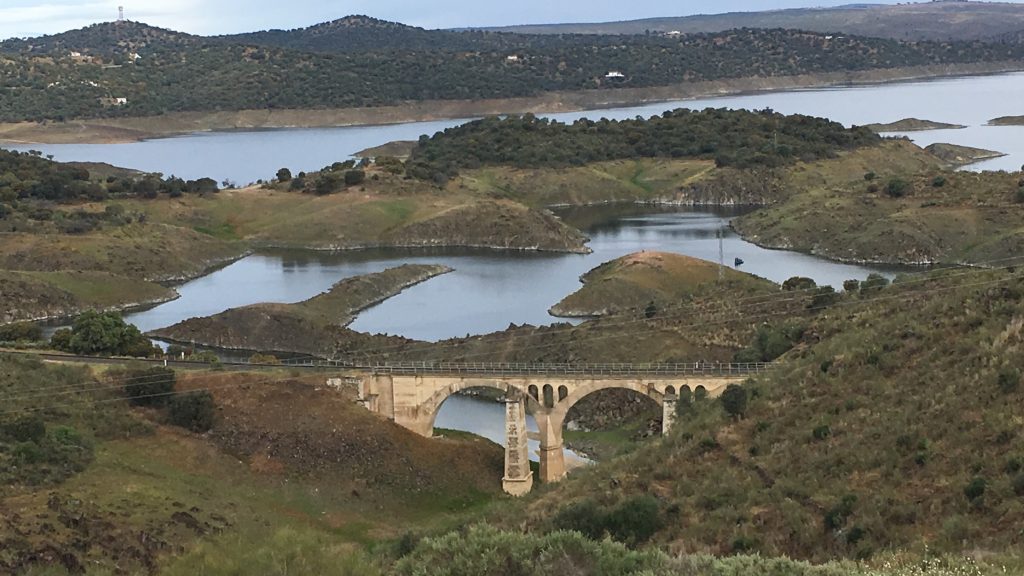
Coming down from the hills I meet N-630 again.
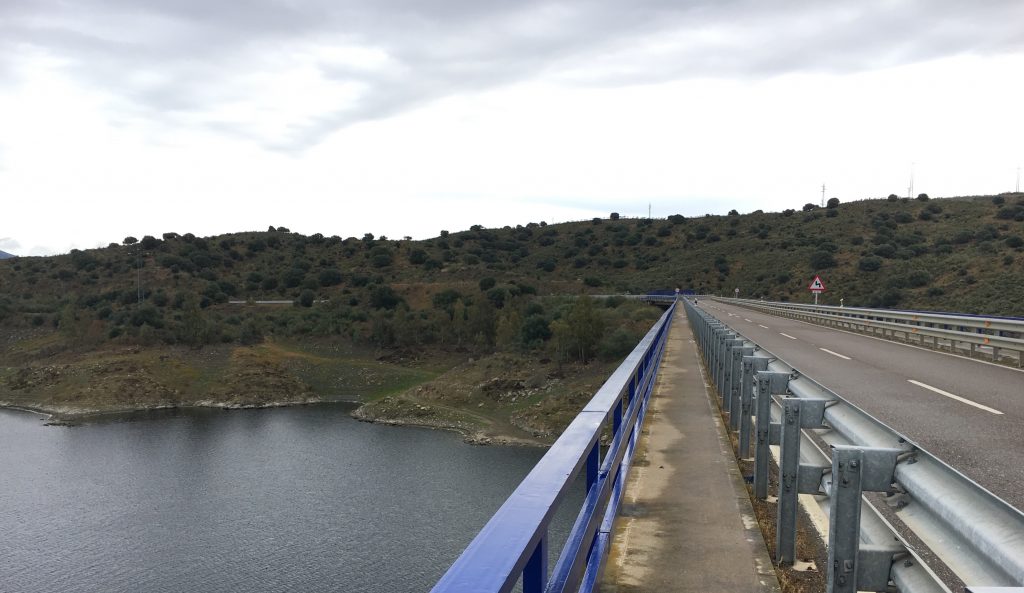
The day ends in Cañaveral in a fine albergue.
Cañaveral
The day starts with rain and a walk on N-630. When I turned left 500m later I was in the most beautiful landscape.
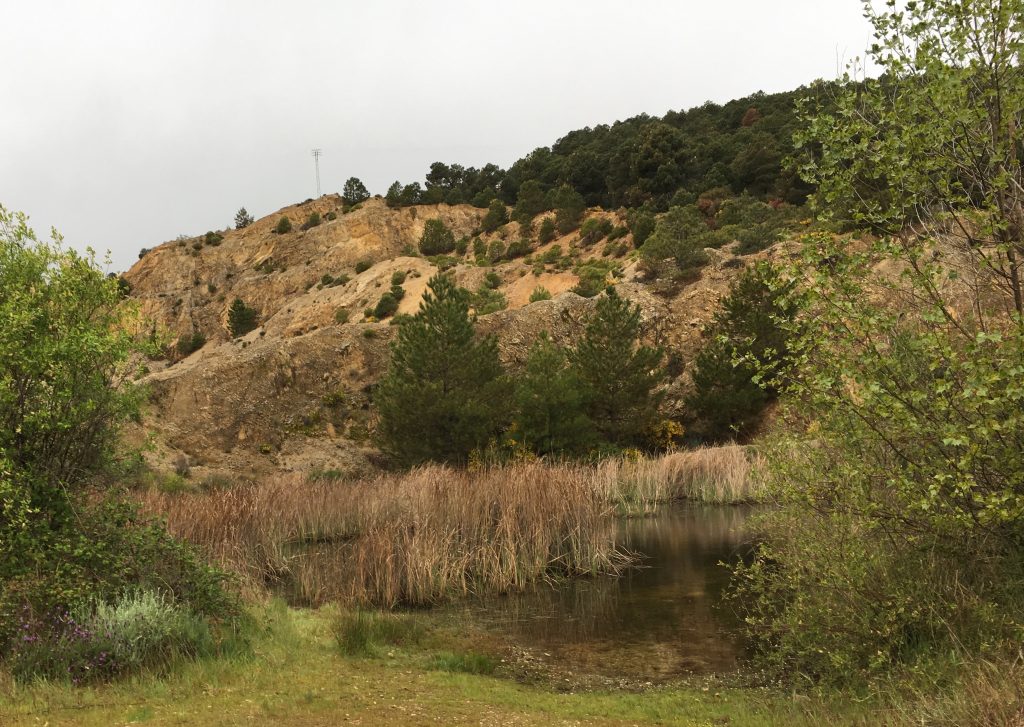
The rain was not an issue anymore.
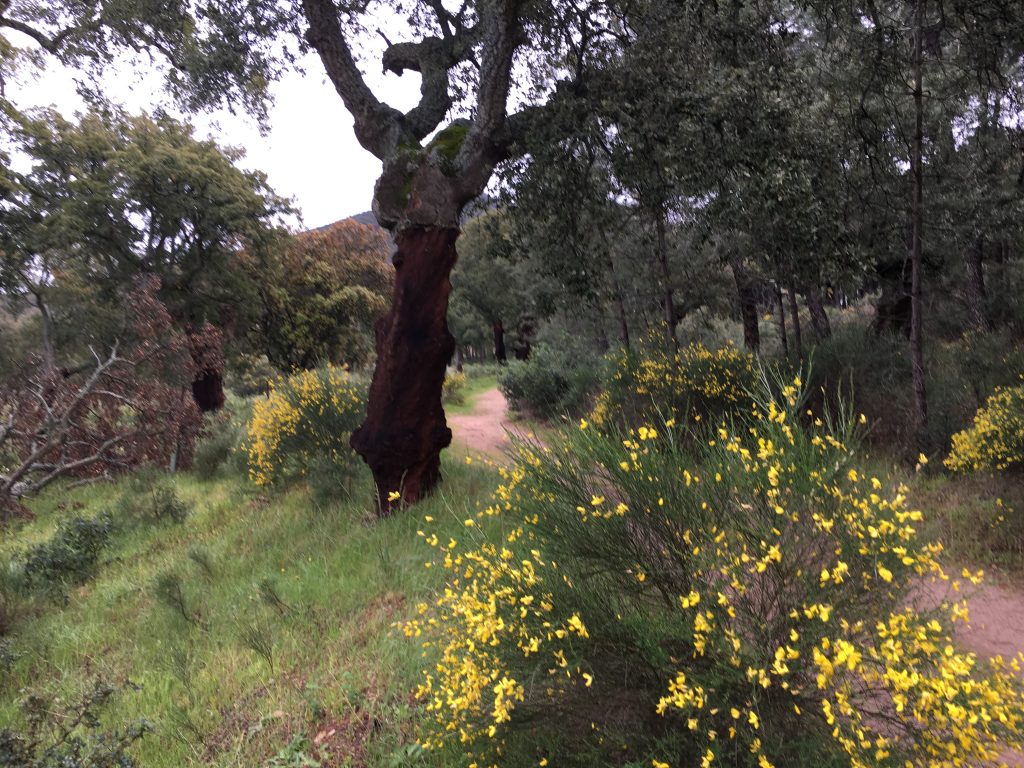
Cork oaks overall.
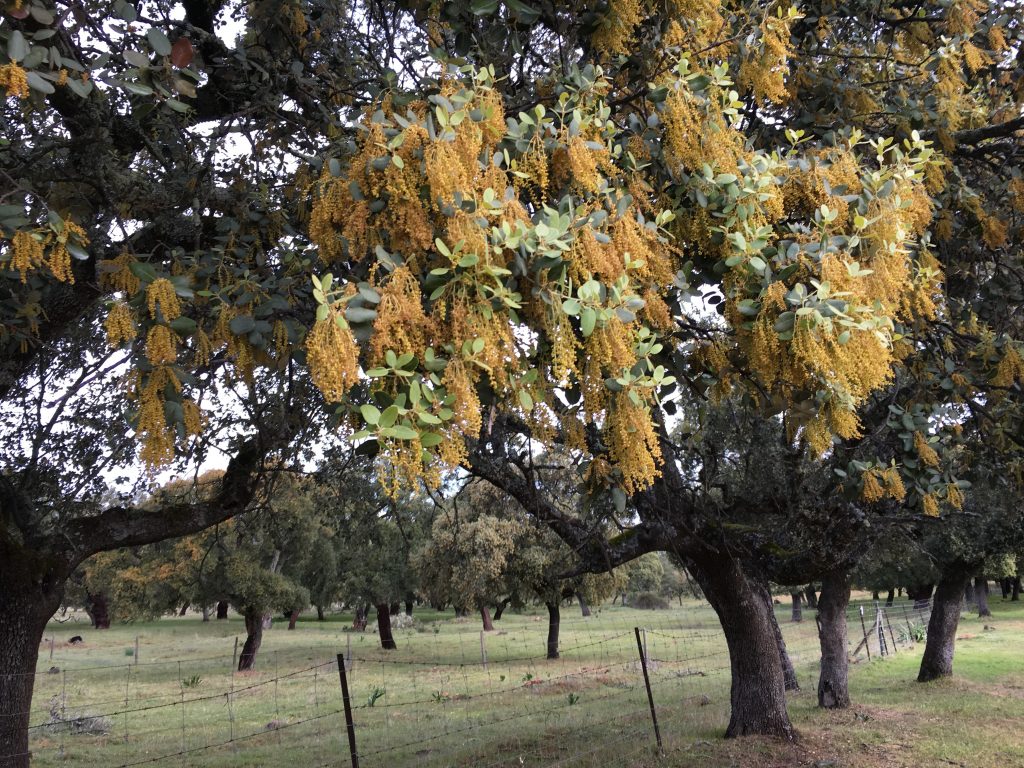
After a long day I arrive Galisteo, the city surrounded by high stone walls.
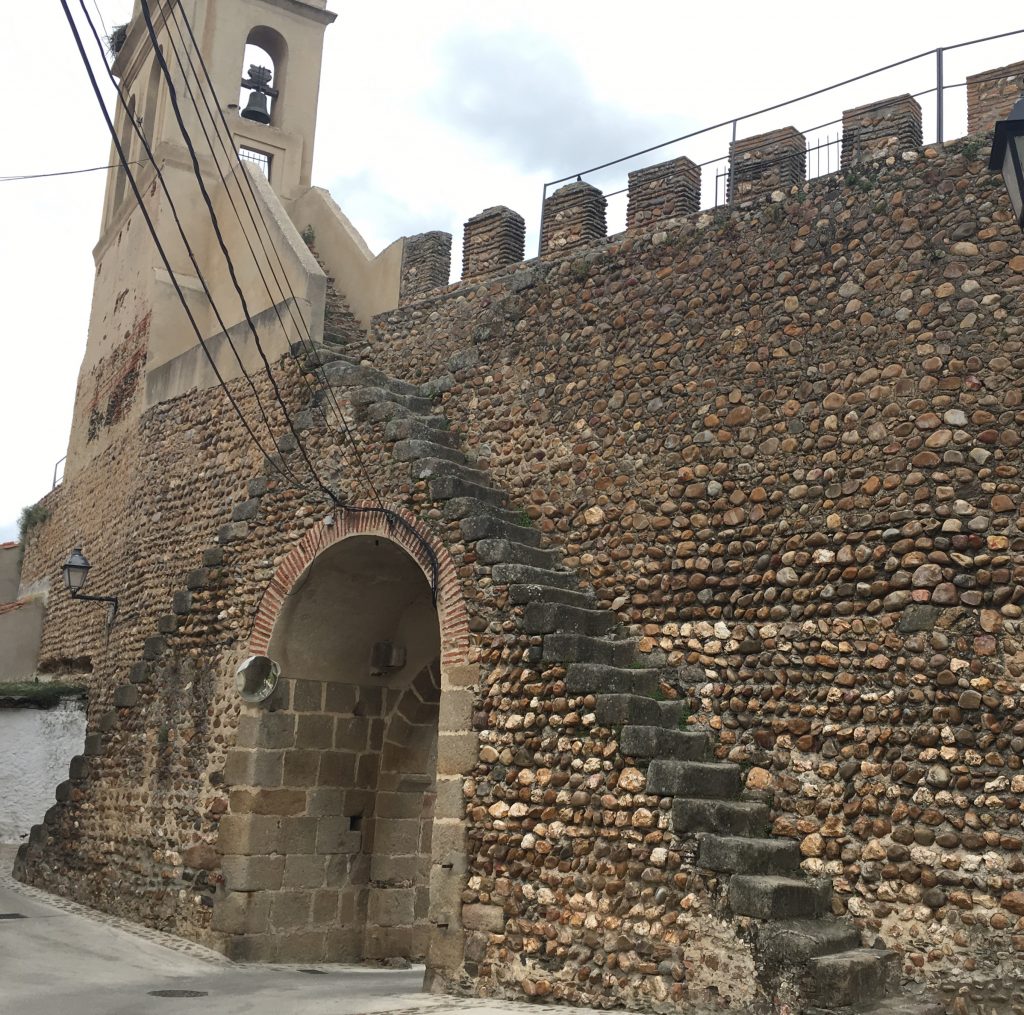
Galisteo
Early morning, good weather, café con leche y tostada in the hostel. Jean Pierre left before me. I got a good photo from a roman bridge just outside the city. And speeded up a little in order to catch him.
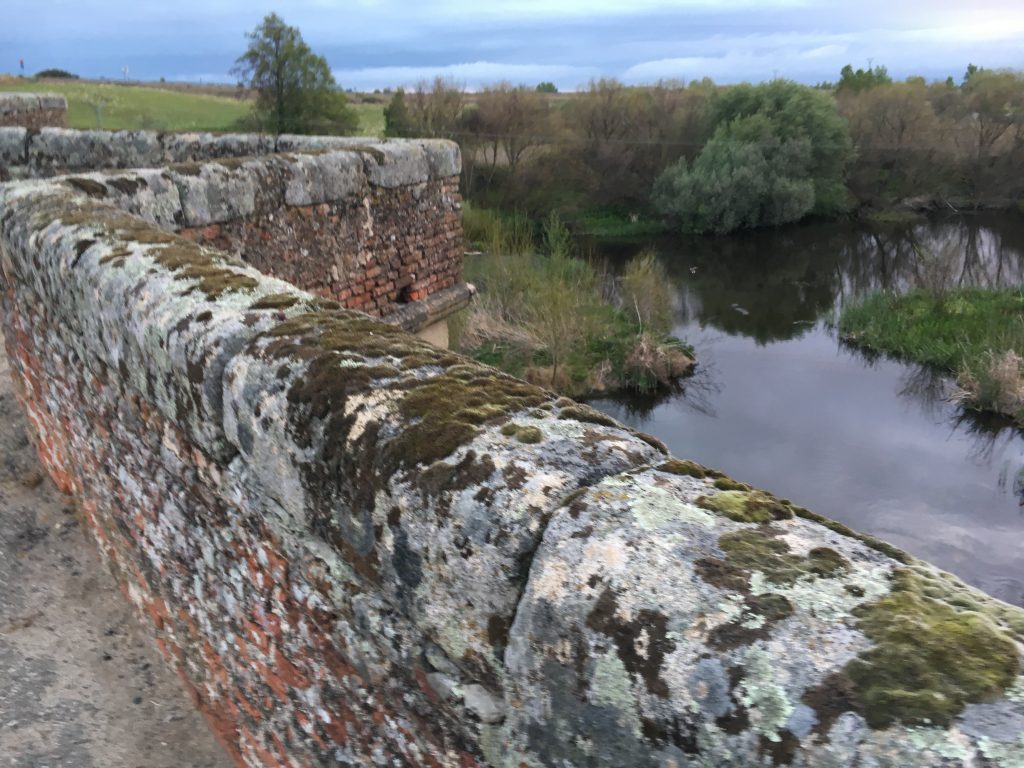
First 10 km was on asfalt to Carcaboso. Jean Pierres backpack was out of balance, but that’s only a minor problem.
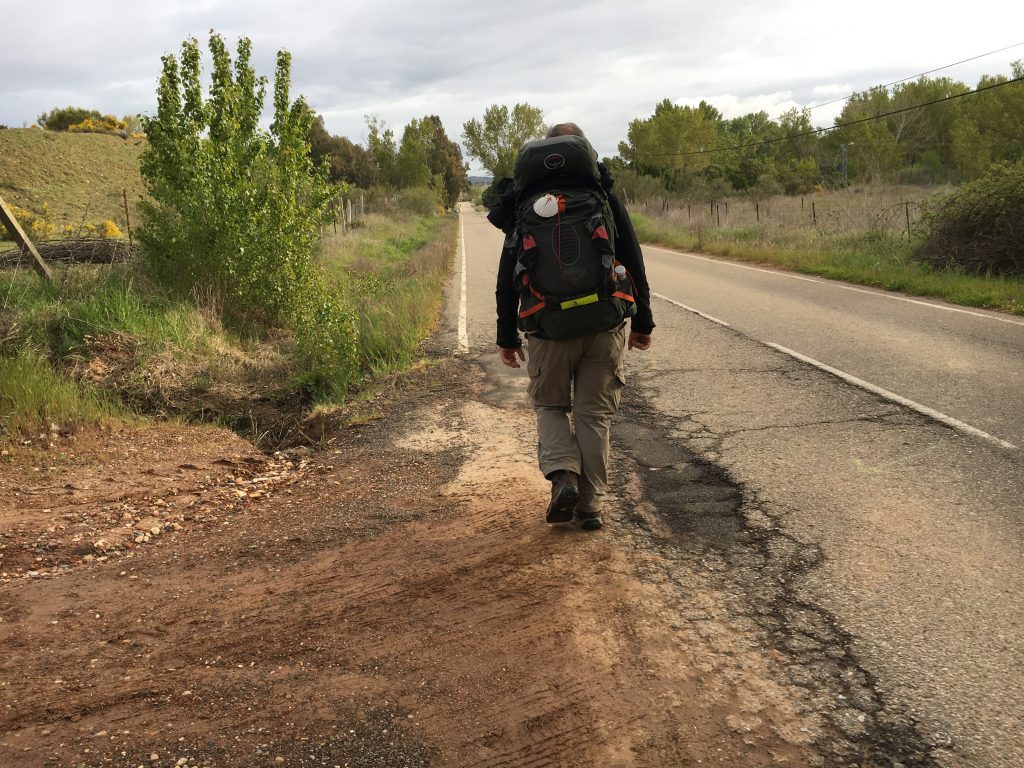
From Carcaboso the walking was a pleasure.
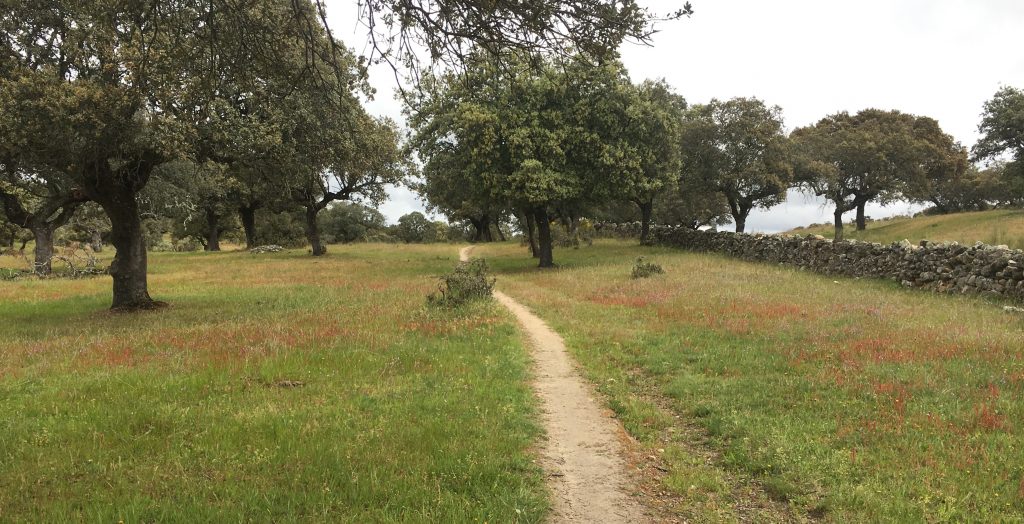
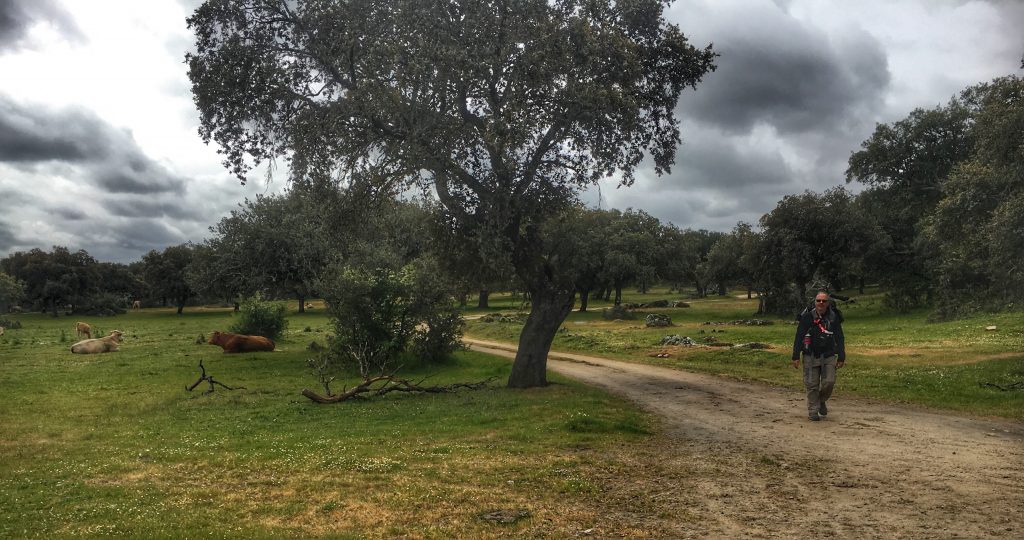
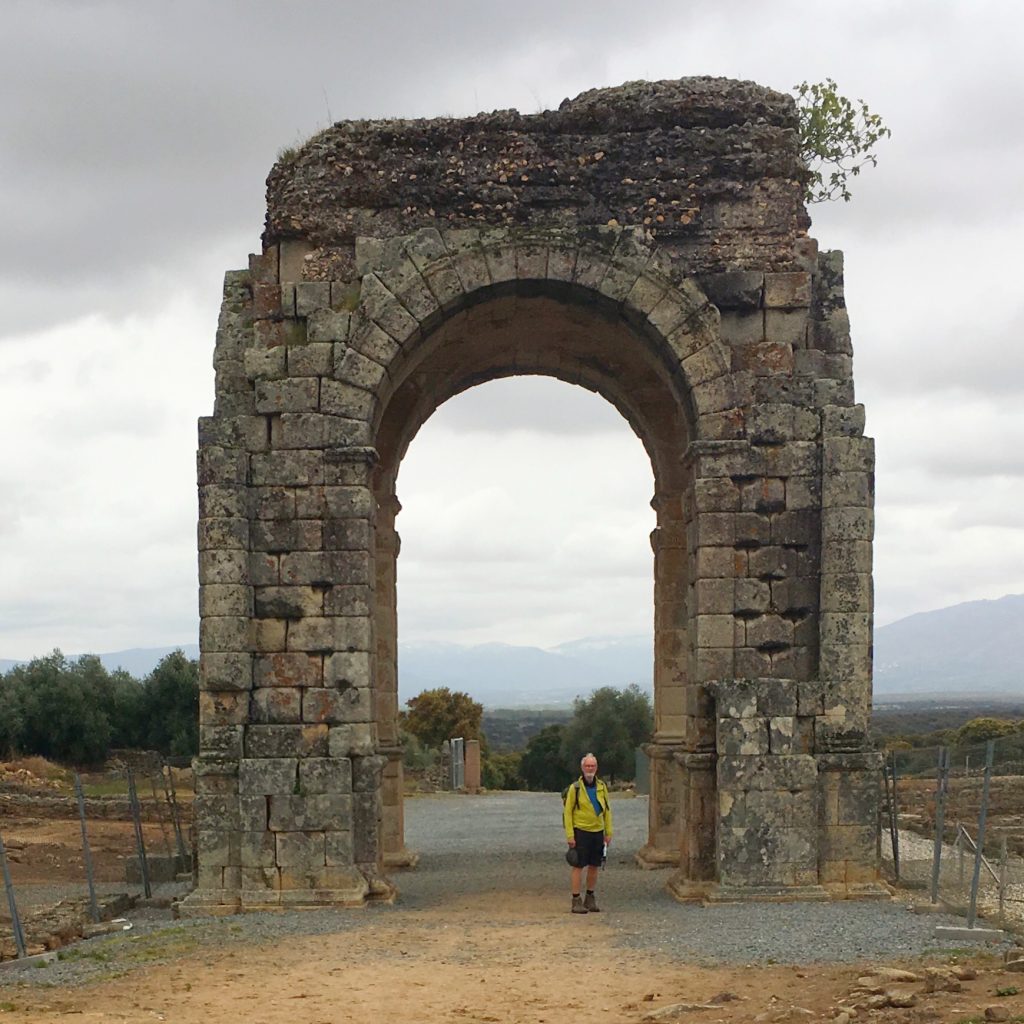
This third day with 30 km walking ends at hotel Asturias. Double rum at 32€ is ok.
Cáparra
Since being in a hostal I take it easy in the morning. With bus back to the camino at Banyos de Montmayor.
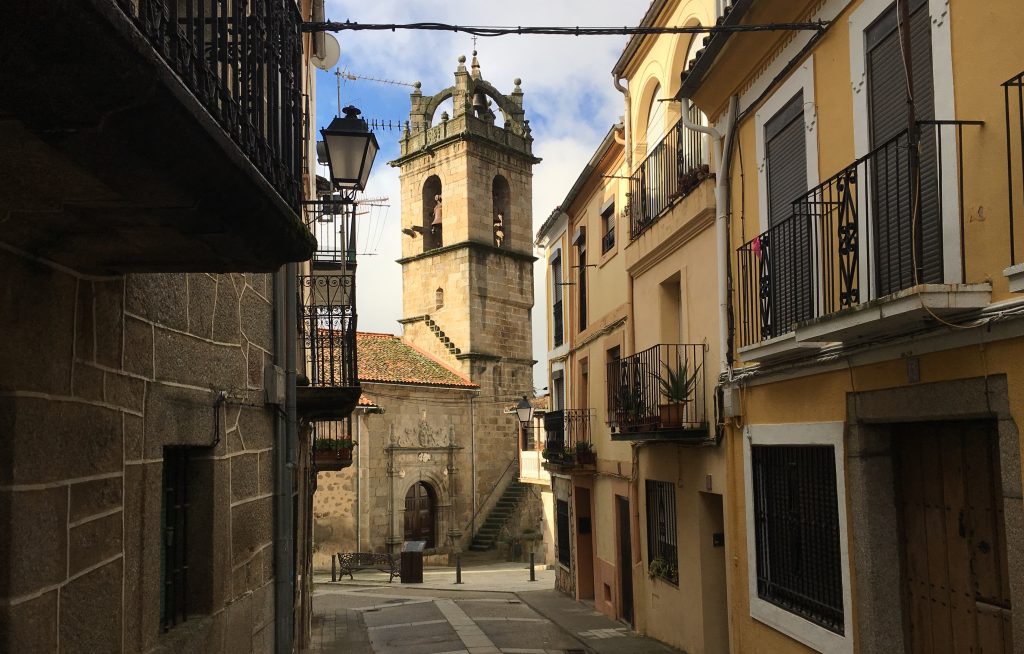
Here I meet Ángel and walked together with him to the endpoint for the day, Calzada de Bajar.
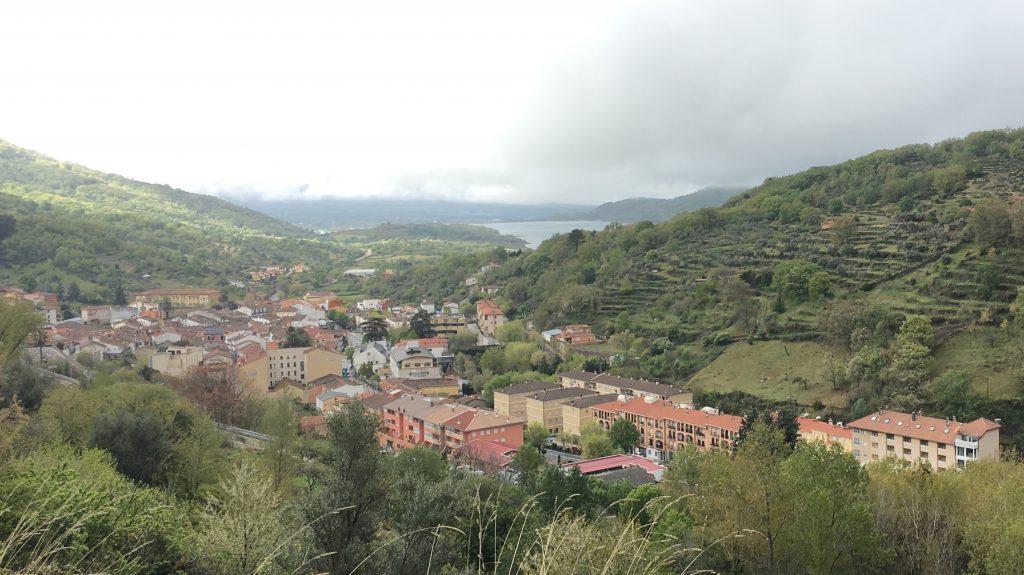
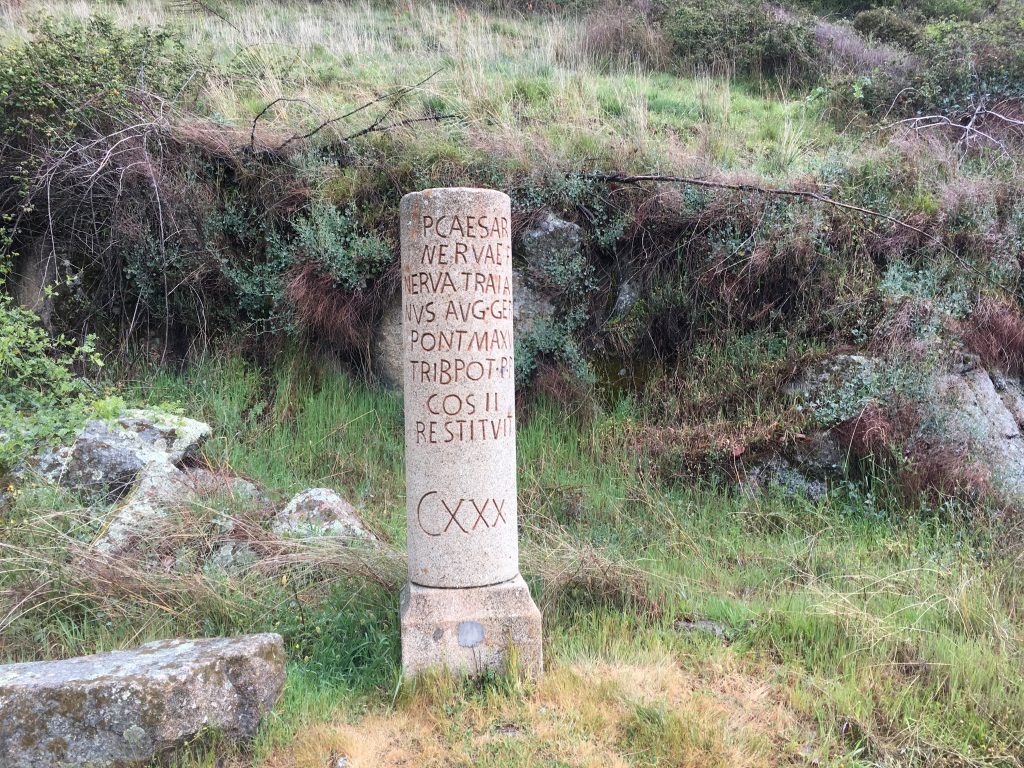
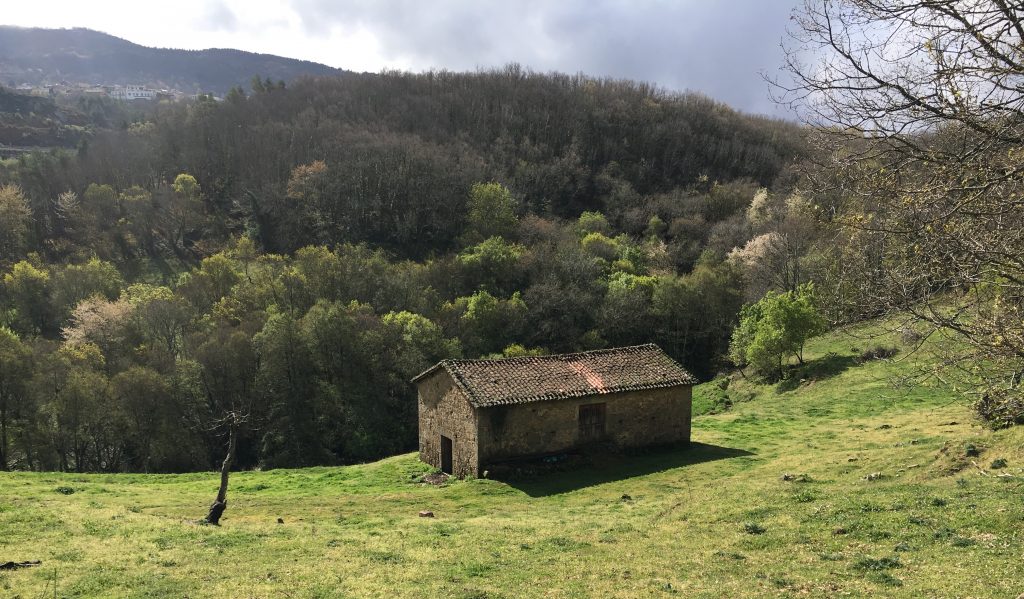
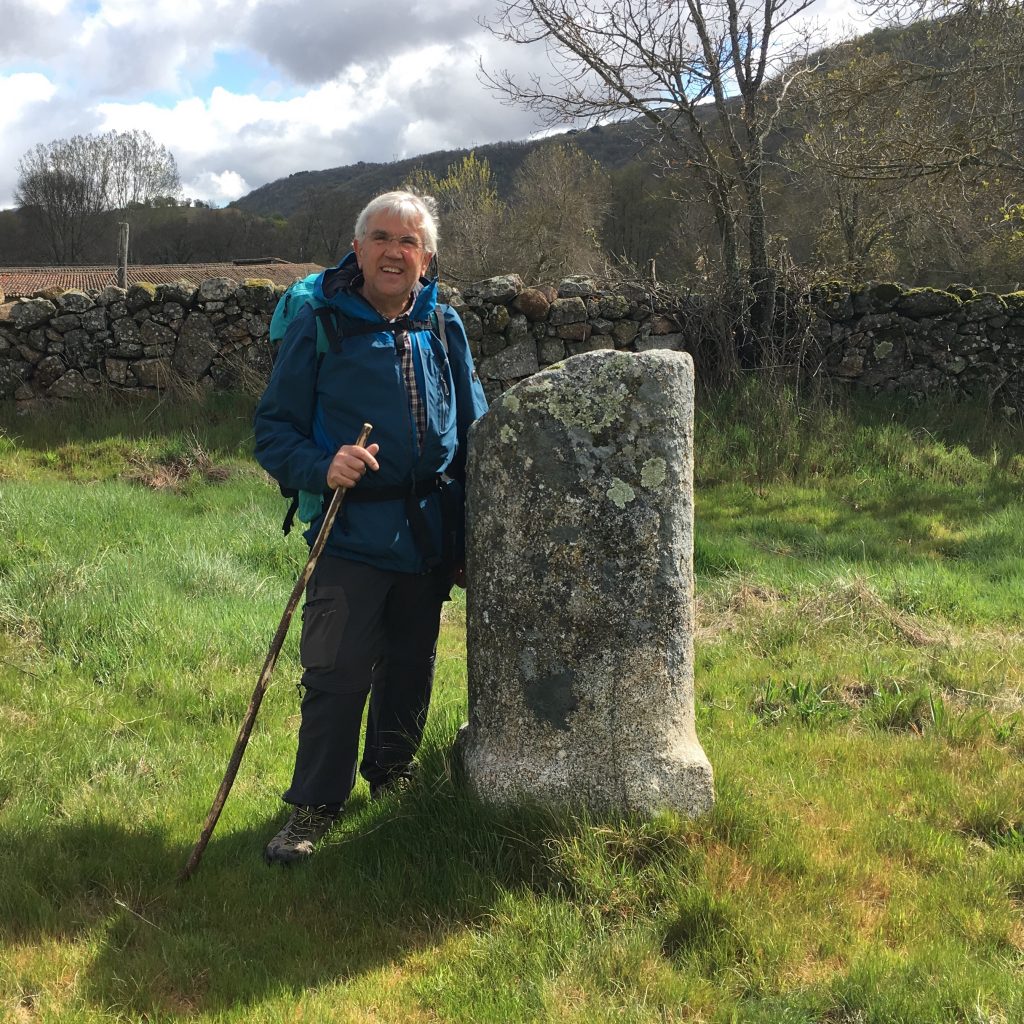
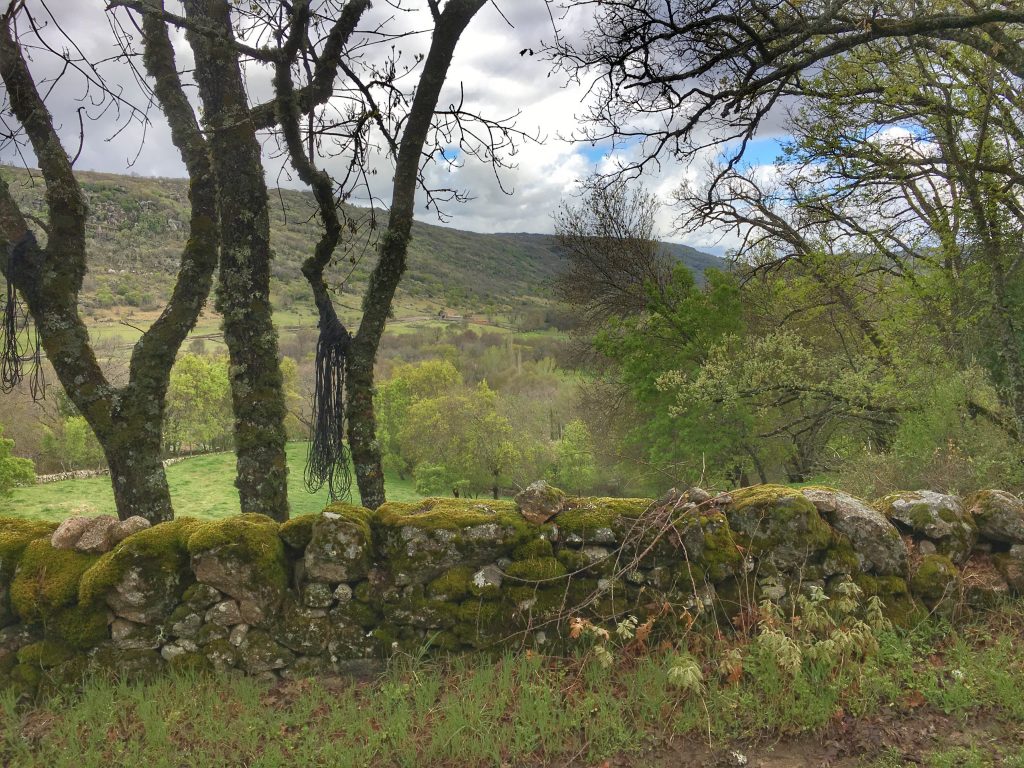
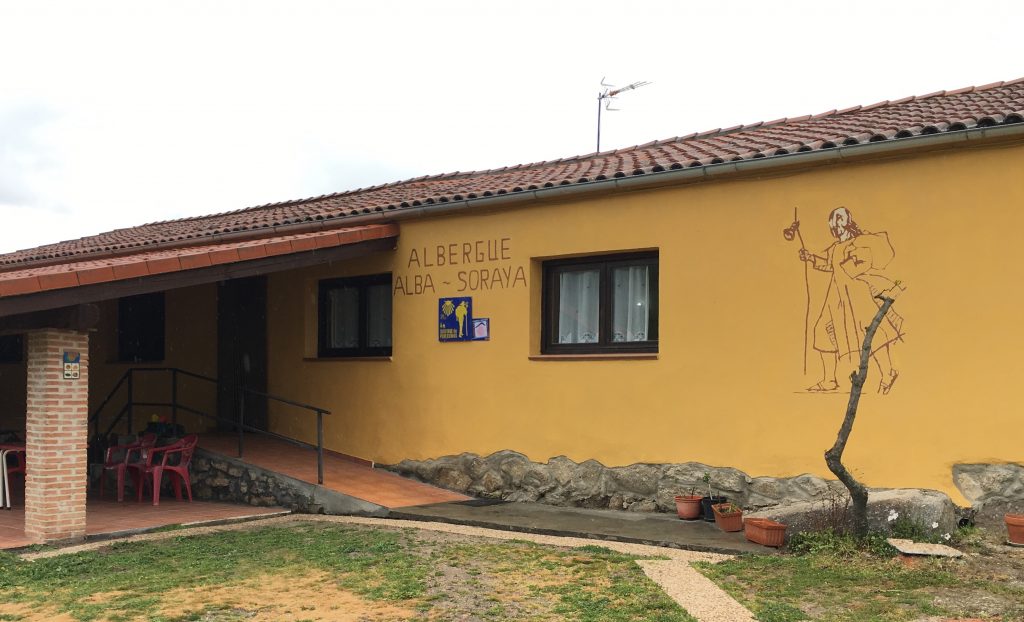
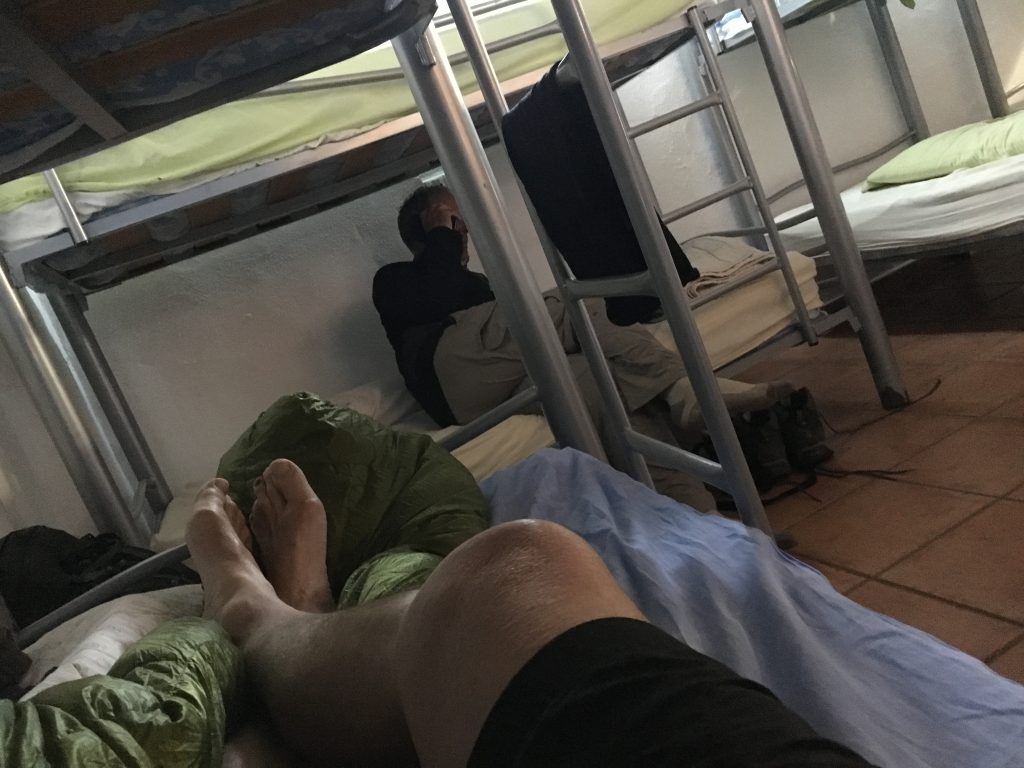
Next Castilla y León